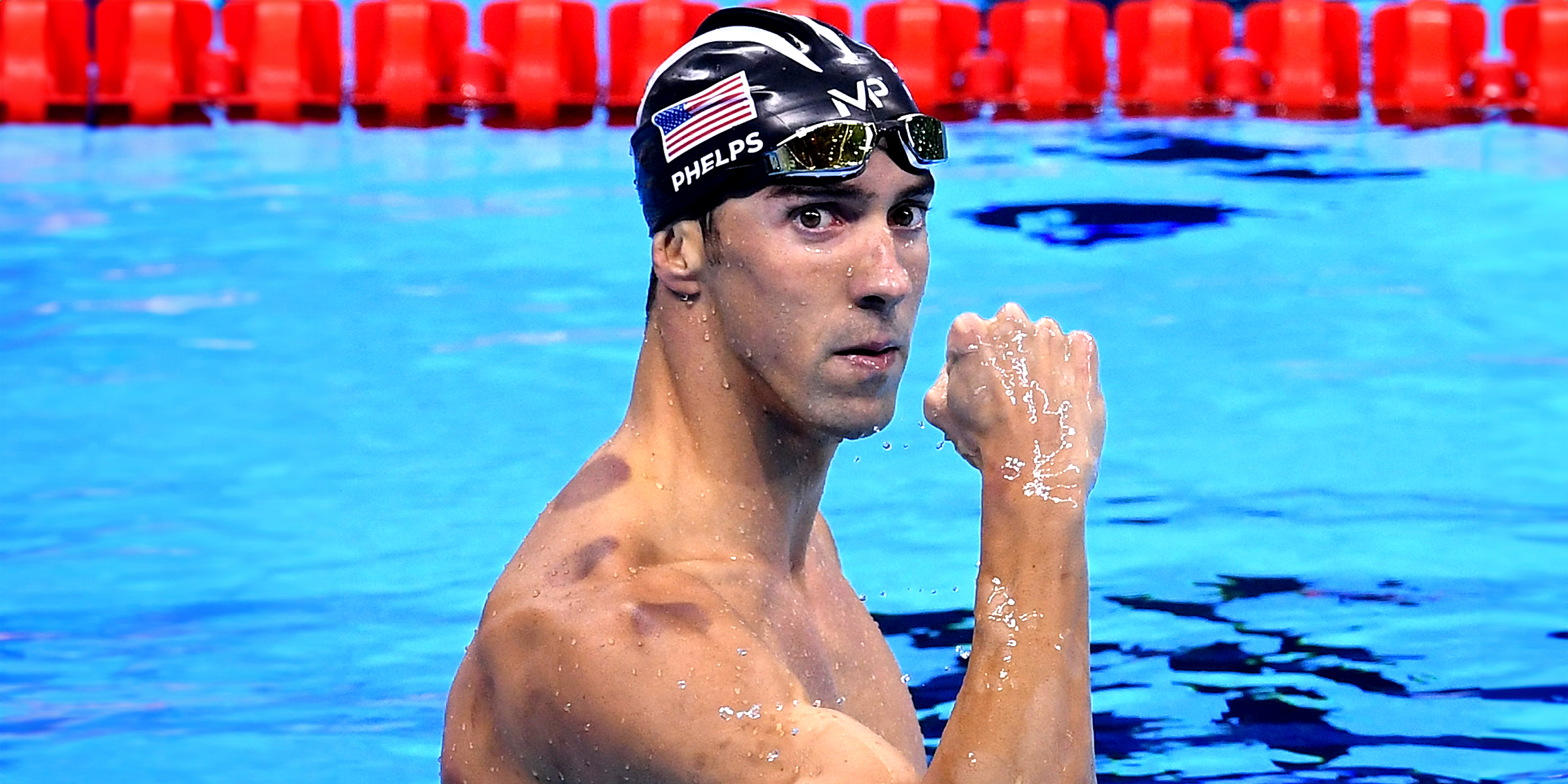
Why Were Olympic Athletes & Other Celebs Spotted with Dark Red Circles on Their Bodies?
- Over the years, the Olympic Games have featured athletes with dark red circles on their skin.
- These marks, often seen on the shoulders and backs of top performers, have led many to question their origin and significance.
- The story behind these unusual blemishes reveals a fascinating blend of ancient practice and modern athletic recovery.
The Paris 2024 Games officially commenced on July 27, 2024, with a spectacular opening ceremony held along the Seine River. Approximately 6,800 athletes from 205 different teams participated, boarding various boats to mark the beginning of the event.
Fans who have been following the Olympic Games over the years may have noticed something peculiar about many athletes. Large, dark red circular marks are frequently spotted on their bodies, prompting curiosity and speculation among viewers and fans alike.
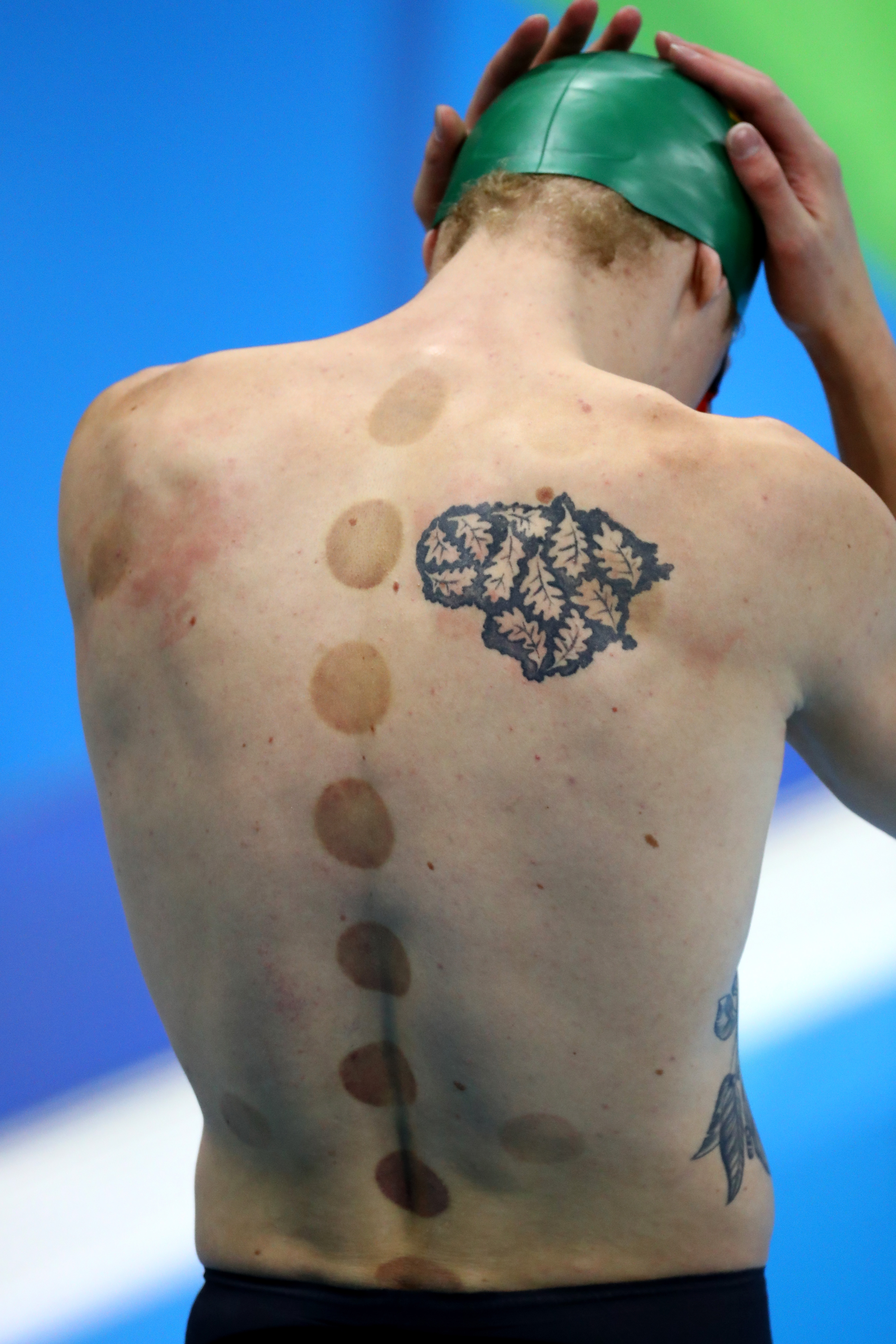
Simonas Bilis prepares in the Men's 50m Freestyle Final at the Rio 2016 Olympic Games in Rio de Janeiro, Brazil, on August 12, 2016. | Source: Getty Images
These distinctive marks, often seen on the shoulders, back, and other muscle groups, have become common among athletes and some celebrities. But what is the story behind these unusual markings?
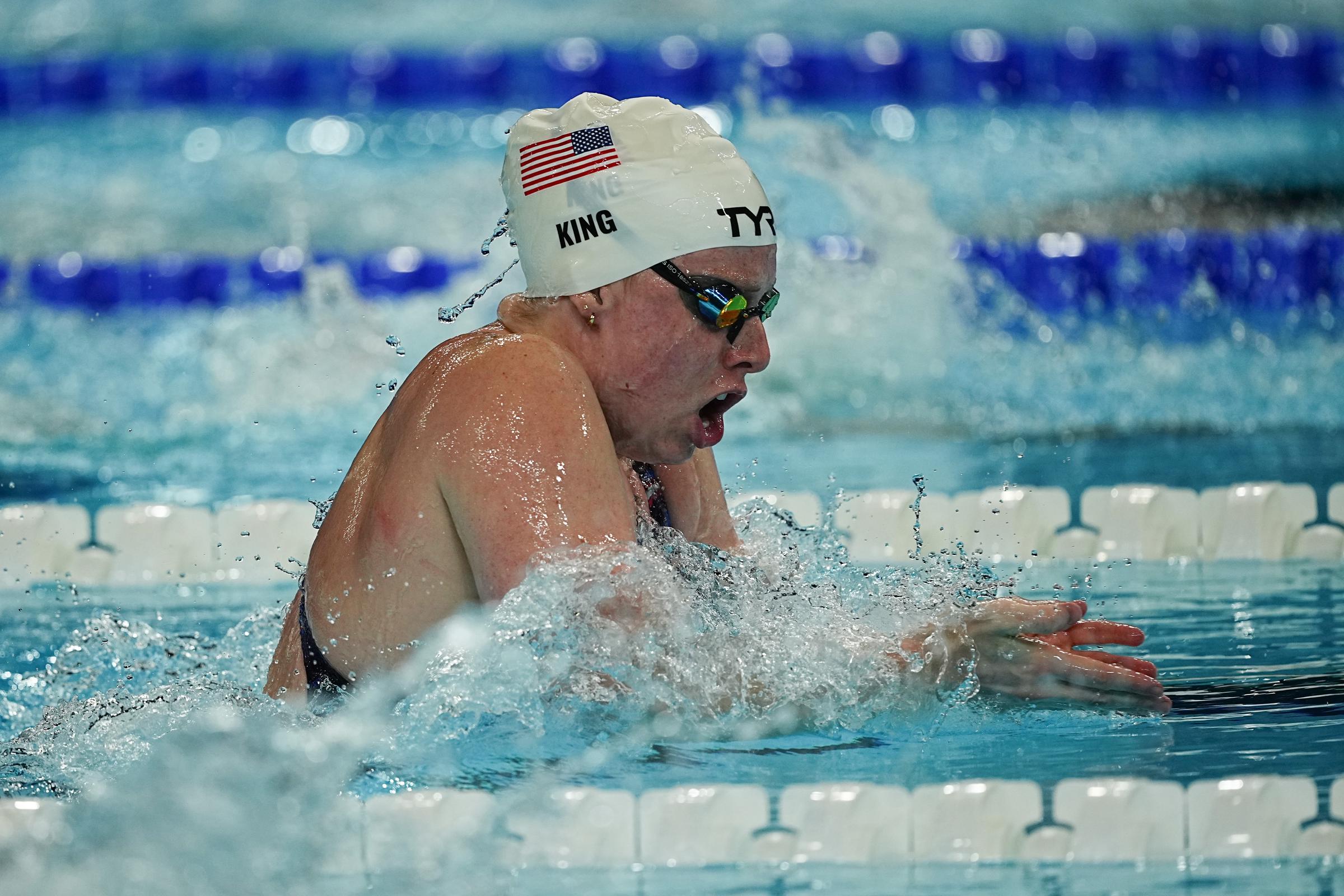
Lilly King taking part in the 200 m breaststroke, women, heats, in Paris, France, on July 31, 2024. | Source: Getty Images
Wang Qun
While preparing for the Beijing 2008 Olympic Games, Wang Qun was photographed by the swimming pool, her body glistening with water. She donned a sleek swimsuit, its back featuring a criss-cross pattern that revealed prominent, large red circular marks on her skin.
A swim cap securely covered her hair, and she sported swimming goggles. Her one hand rested confidently on her waist, ready for her next plunge into the water.
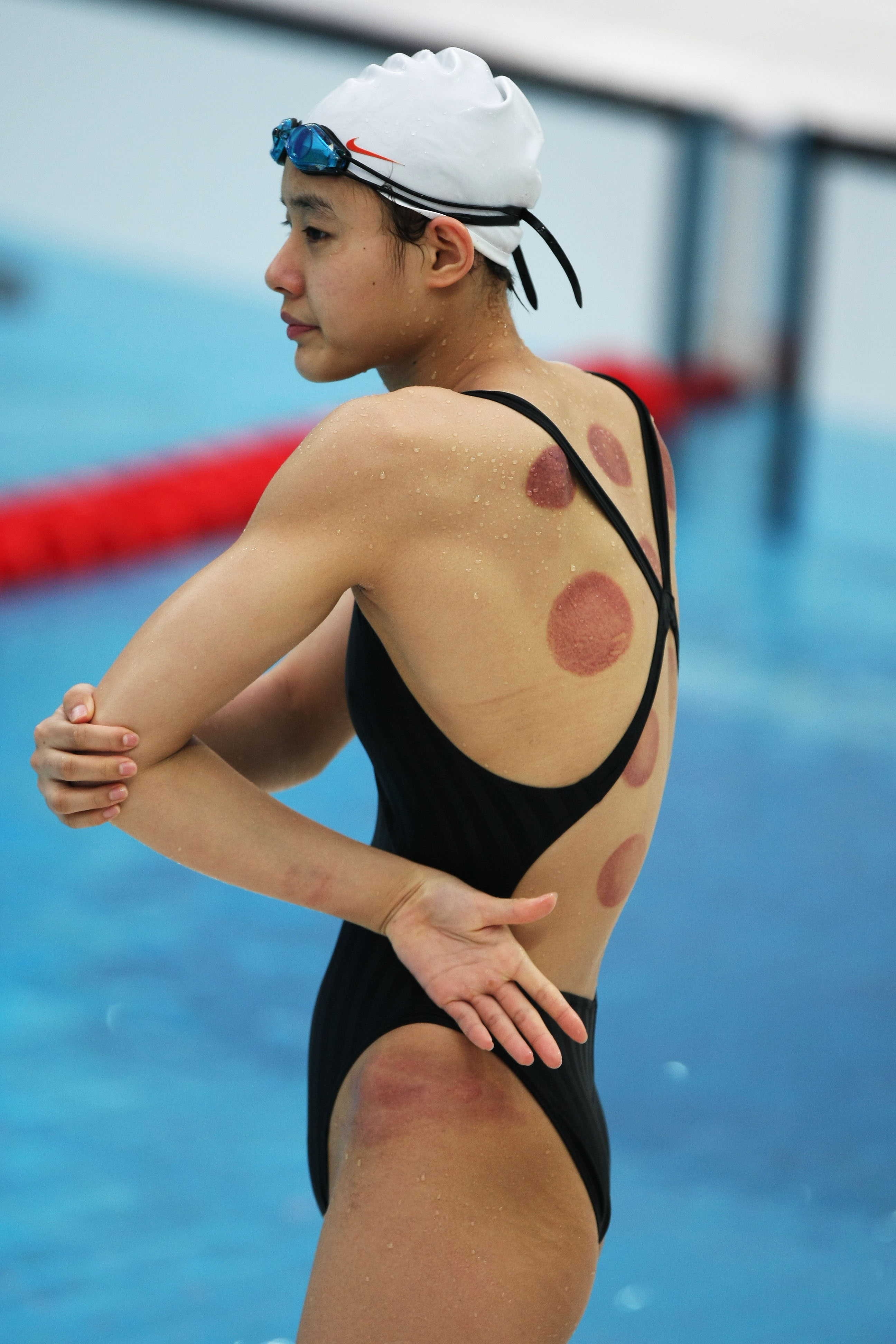
Wang Qun during the swimming practice at the National Aquatics Center ahead of the Beijing 2008 Olympic Games in Beijing, China, on August 4, 2008. | Source: Getty Images
Michael Phelps
Michael Phelps was pictured celebrating winning the gold in the Men's 4 x 200m Freestyle Relay at the Rio 2016 Olympic Games. Noticeable round red spots could be seen on either side of his broad shoulders.
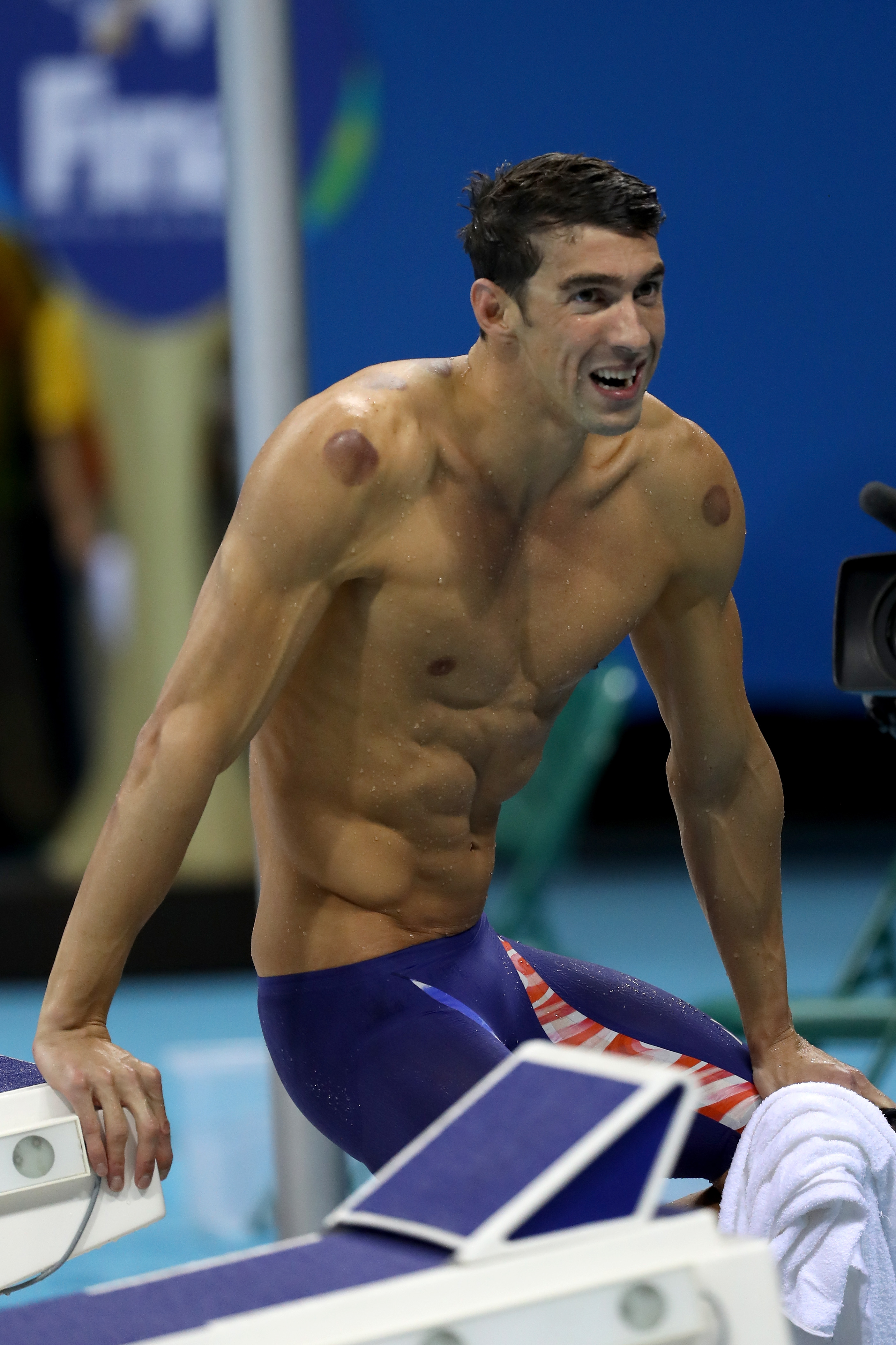
Michael Phelps wins gold medal for the Men's 4 x 200m Freestyle Relay Final at the Rio 2016 Olympic Games in Rio de Janeiro, Brazil, on August 9, 2016. | Source: Getty Images
In another picture, prominent red patches could be seen on Phelps' abs, arms, and shoulders as he celebrated winning the Men's 200m Butterfly at the same event.
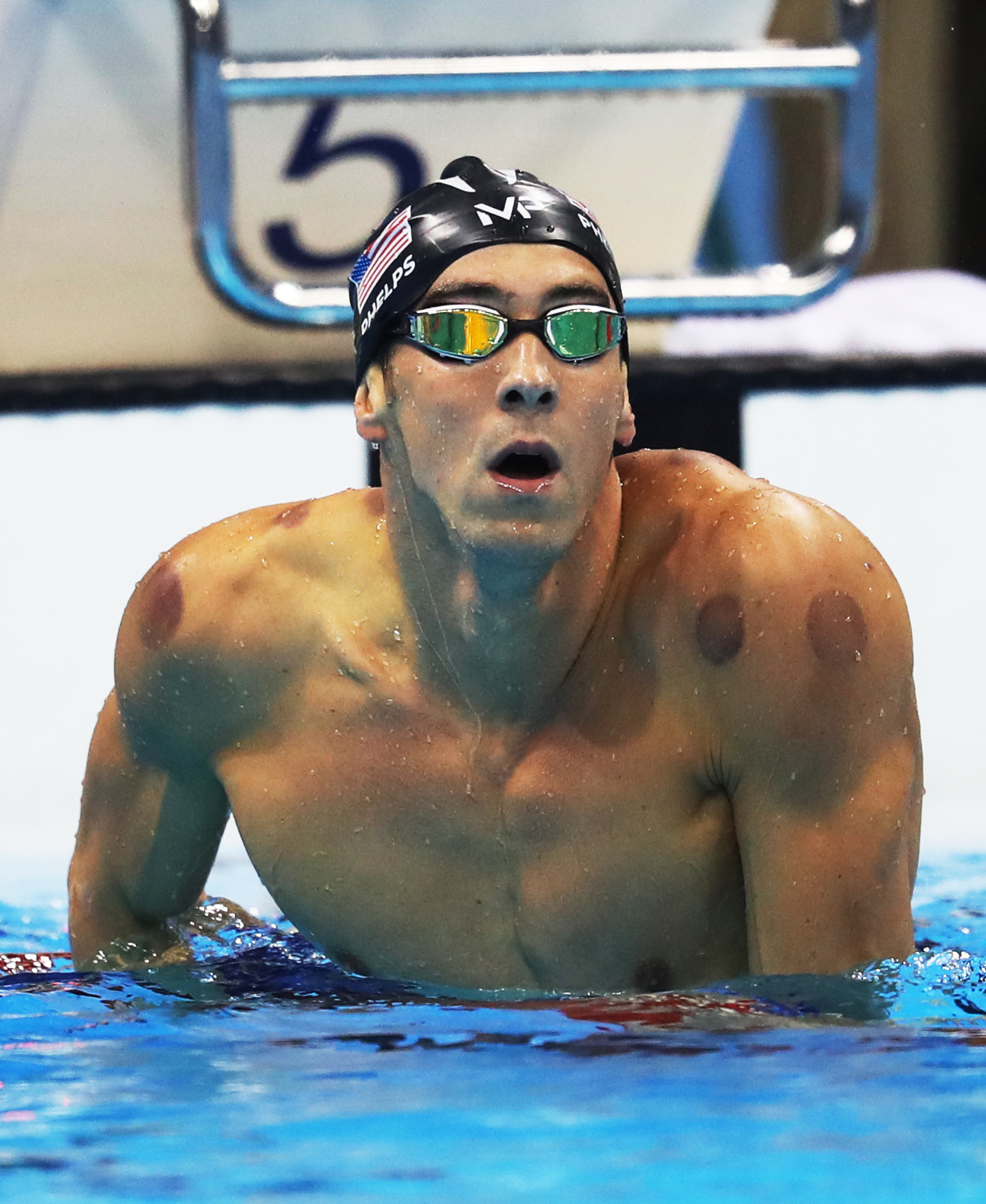
Michael Phelps wins the Men's 200m Butterfly and his 20th Olympic Gold medal at the Rio 2016 Olympic Games in Rio de Janeiro, Brazil, on August 9, 2016. | Source: Getty Images
This win also marked his 20th Olympic gold medal. The most decorated Olympian of all time flashed a grin at the cameras as he emerged from the water, the red rings standing out against his damp skin.
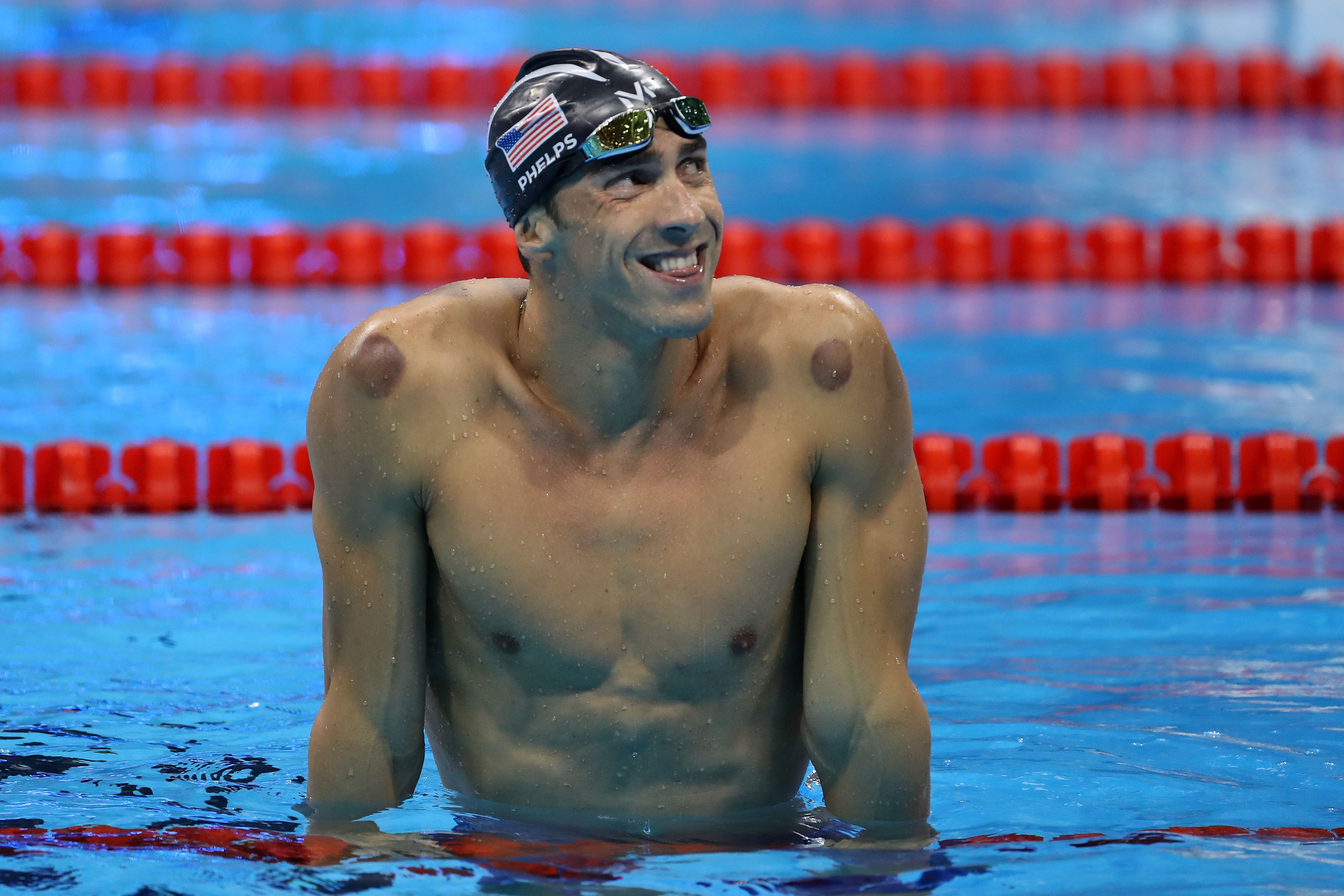
Michael Phelps wins gold in the Men's 200m Butterfly Final at the Rio 2016 Olympic Games in Rio de Janeiro, Brazil, on August 9, 2016. | Source: Getty Images
The distinctive red circles were also visible as Phelps prepared to compete in a Men's 100m Butterfly heat during the swimming event. He stood tall, confident, and ready, clasping his hands.
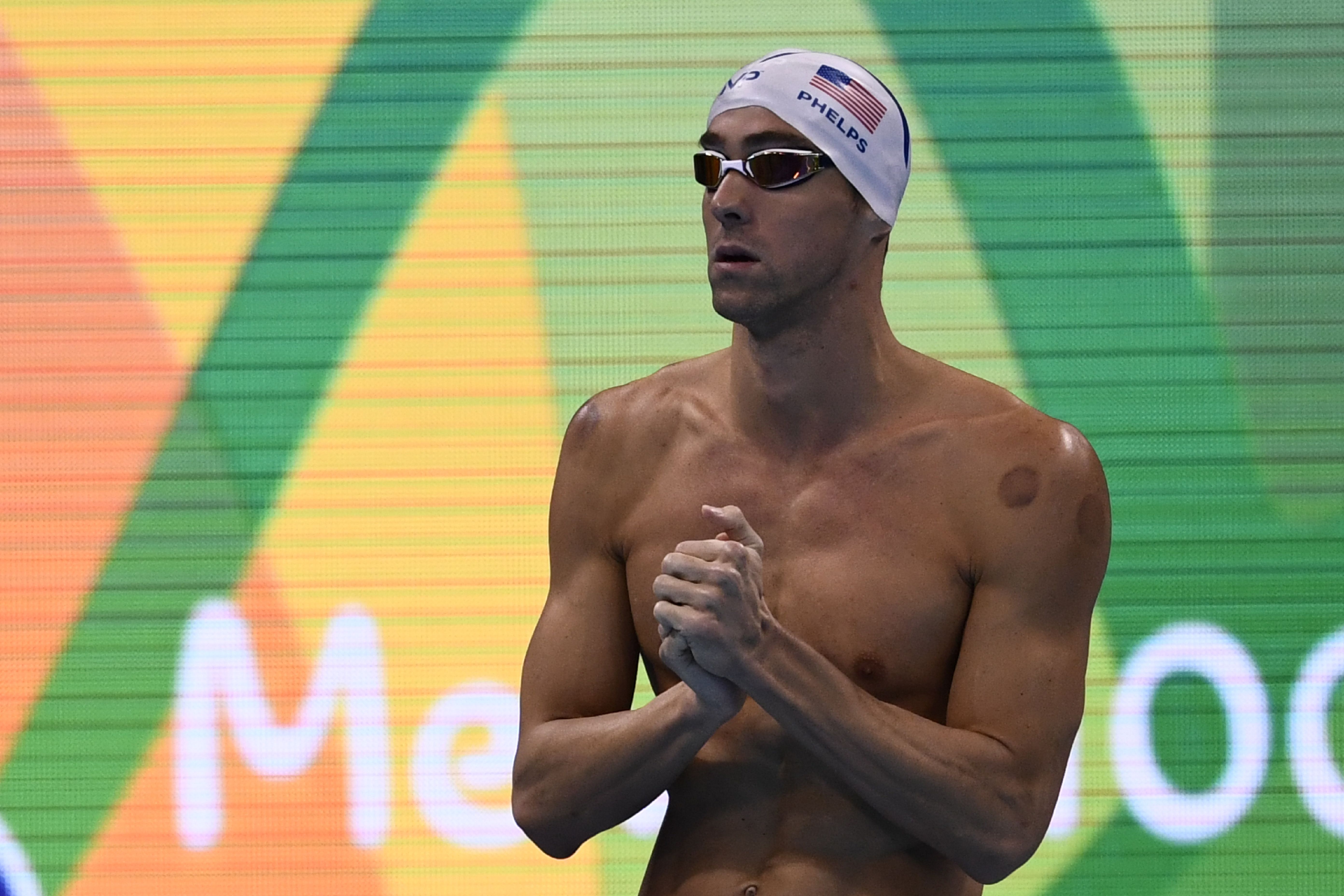
Michael Phelps prepares to compete in a Men's 100m Butterfly heat at the Rio 2016 Olympic Games in Rio de Janeiro on August 11, 2016. | Source: Getty Images
A unique overhead shot revealed the striking large red circular marks extended across Michael Phelps' back. The picture was taken as he prepared to compete in the Men's 200m Individual Medley Semifinal.
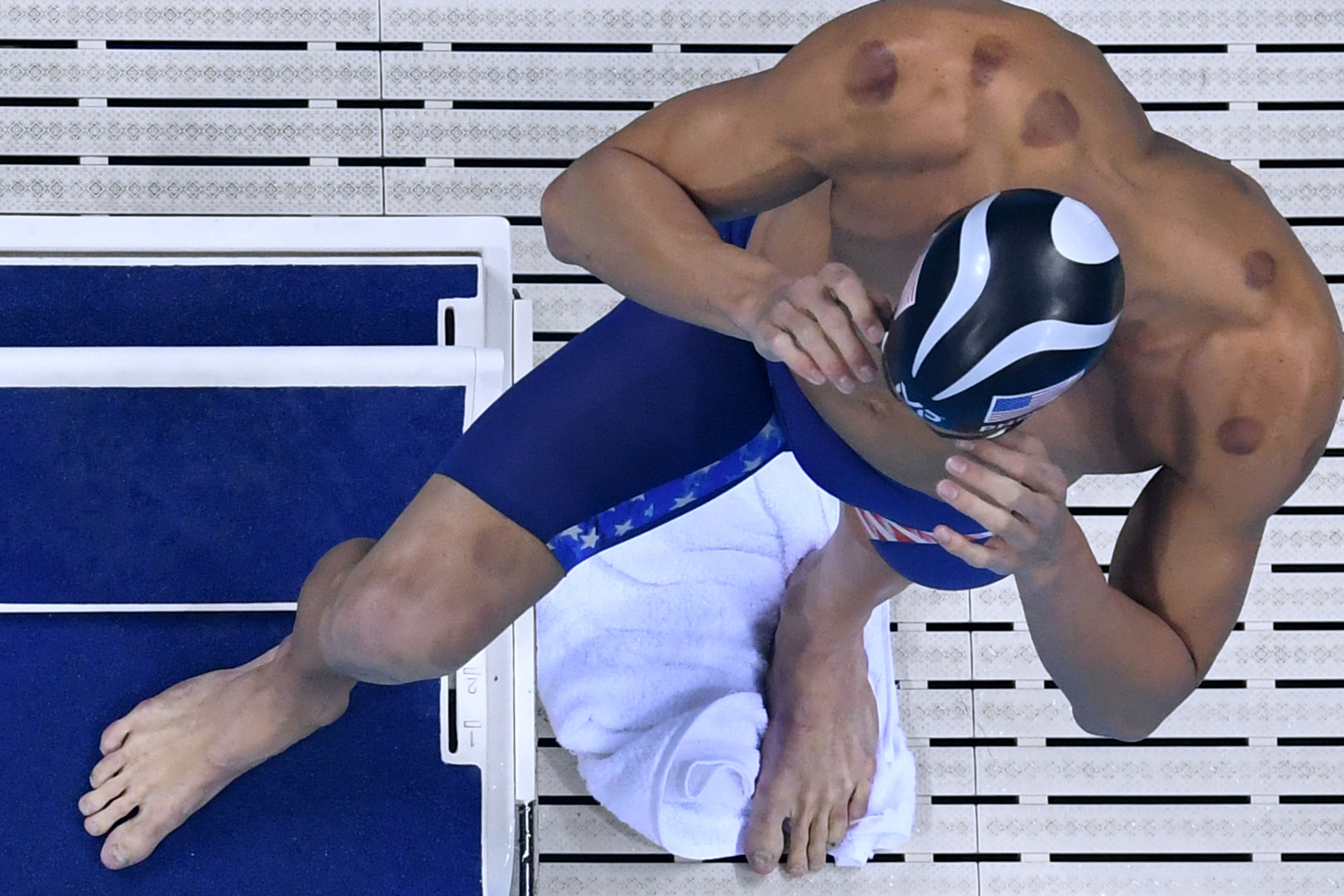
Michael Phelps prepares to compete in the Men's 200m Individual Medley Semifinal at the Rio 2016 Olympic Games in Rio de Janeiro on August 10, 2016. | Source: Getty Images
Another endearing picture showed the prominent red patches on Phelps' back muscles. He and Conor Dwyer were celebrating winning gold in the Men's 4 x 200m Freestyle Relay Final.
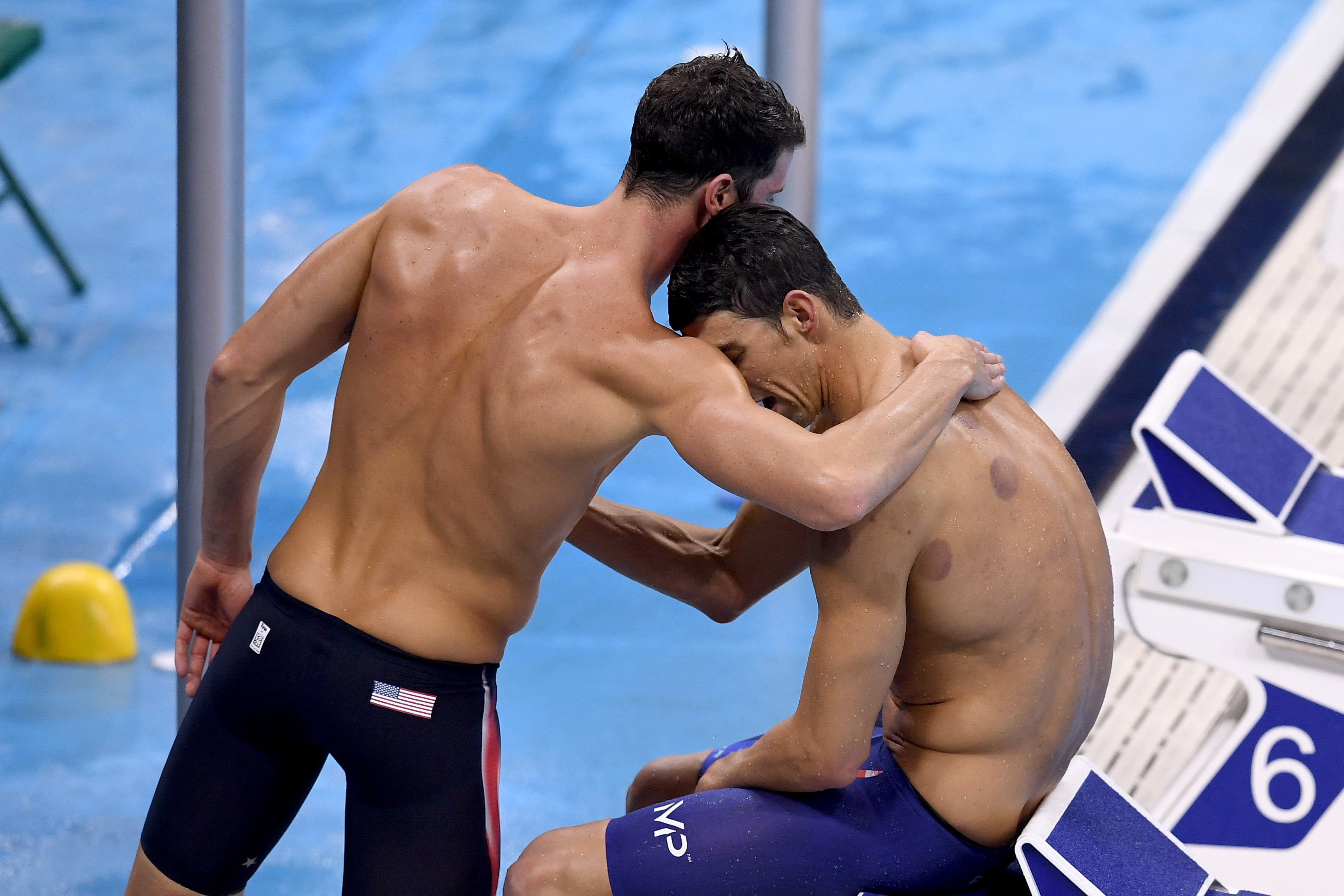
Michael Phelps and Conor Dwyer win gold in the Men's 4 x 200m Freestyle Relay Final at the Rio 2016 Olympic Games in Rio de Janeiro, Brazil, on August 9, 2016. | Source: Getty Images
An elaborate photo of Phelps' posterior torso might lead one to mistake the conspicuous red blotches for bruises on his skin. One such shot was taken as he competed in a men's 200m butterfly heat.
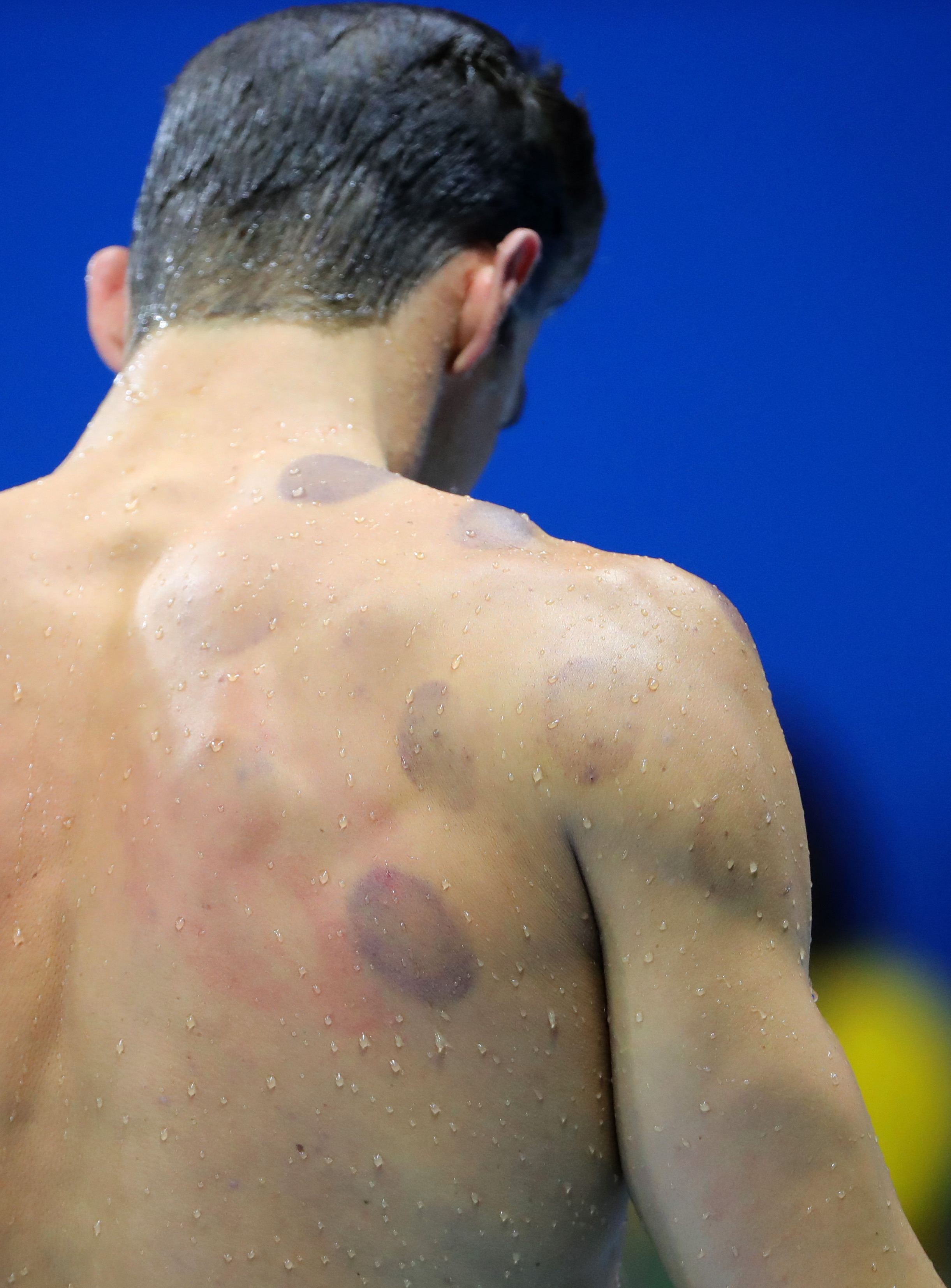
Michael Phelps competes in a men's 200m butterfly heat at the Rio 2016 Olympic Games in Rio de Janeiro, on 8 August 2016. | Source: Getty Images
Another picture was taken as he and Conor Dwyer, Townley Hass, and Ryan Lochte embraced after winning the Men's 4 x 200m Freestyle Relay Final.
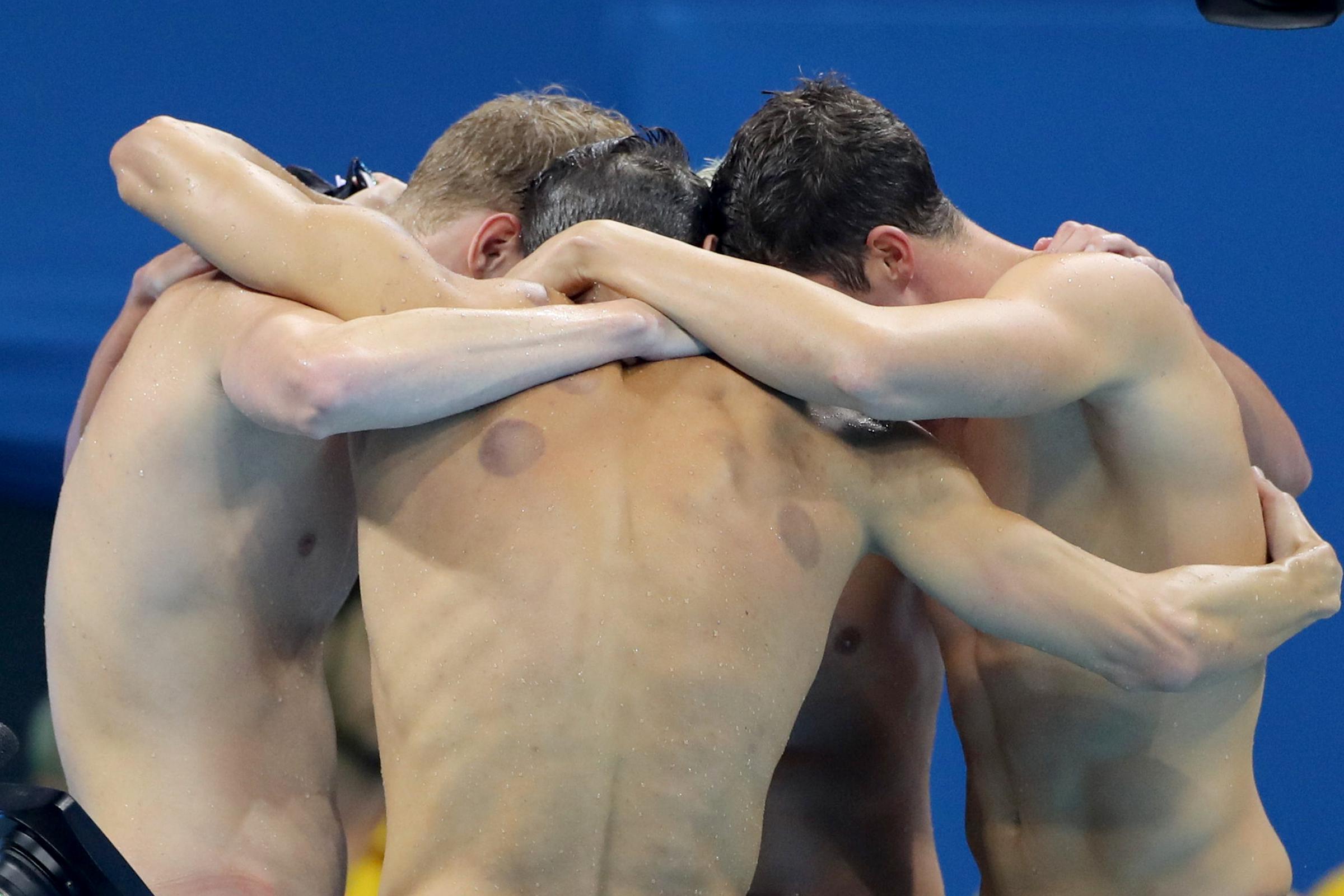
Conor Dwyer, Townley Hass, Ryan Lochte, and Michael Phelps embrace after winning the Men's 4 x 200m Freestyle Relay Final in Rio de Janeiro, Brazil, on August 9, 2016. | Source: Getty Images
The striking red discs stood out on Phelps' muscular body in one more photograph. He was photographed with a determined look on his face as he cheered on his teammate during the final leg of the 4x100-meter freestyle relay.
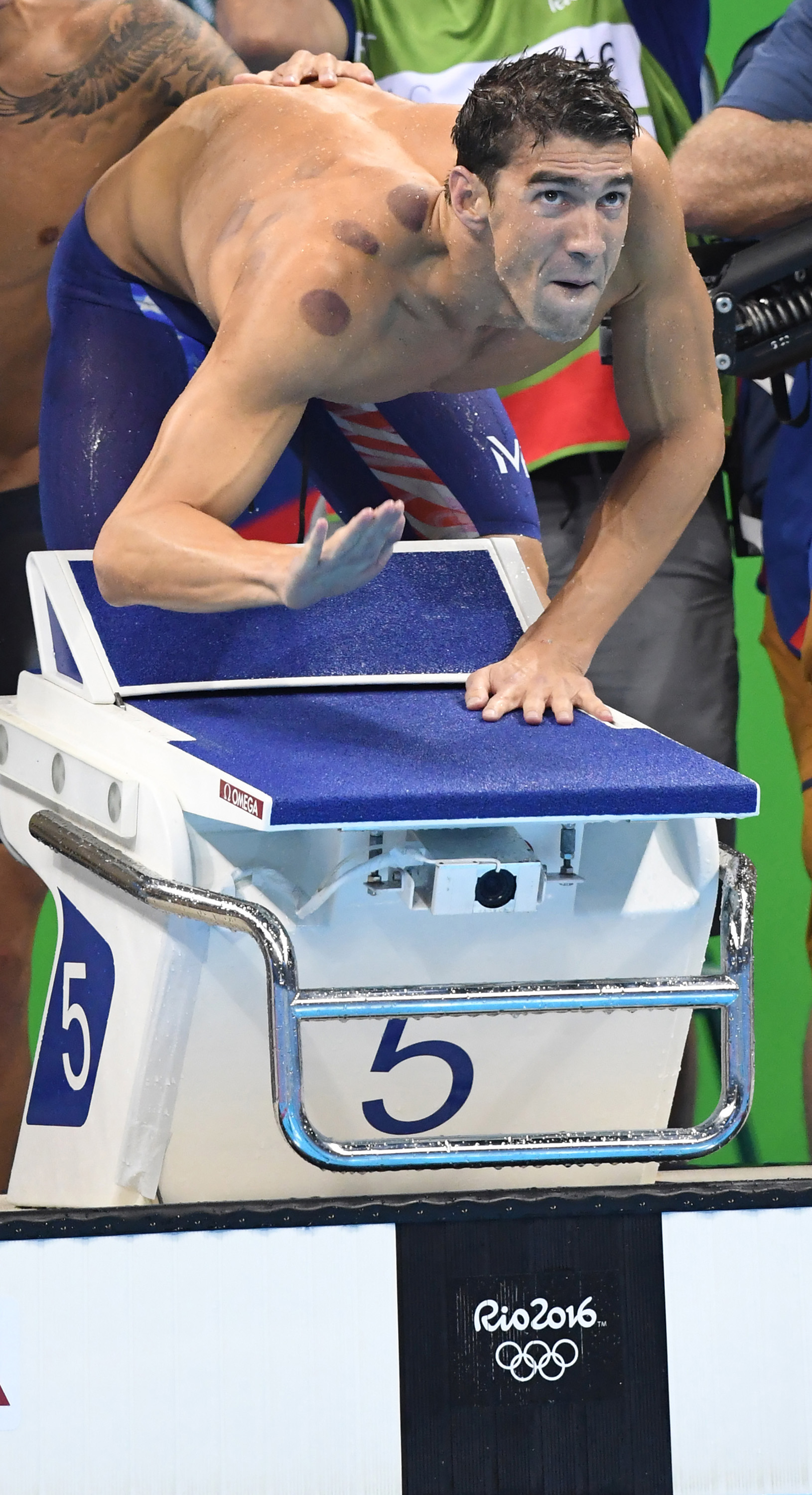
Michael Phelps cheers teammate Nathan Adrian as he swims the last leg of the 4X100-meter freestyle relay at the Rio Games, on August 7, 2016. | Source: Getty Images
Alexander Naddour
Another athlete, American gymnast Alexander Naddour also had a prominent, large red circular mark at the Rio 2016 Olympic Games. The mark stood out on his right arm as he prepared to compete on the pommel horse during the Artistic Gymnastics Men's Team qualification.
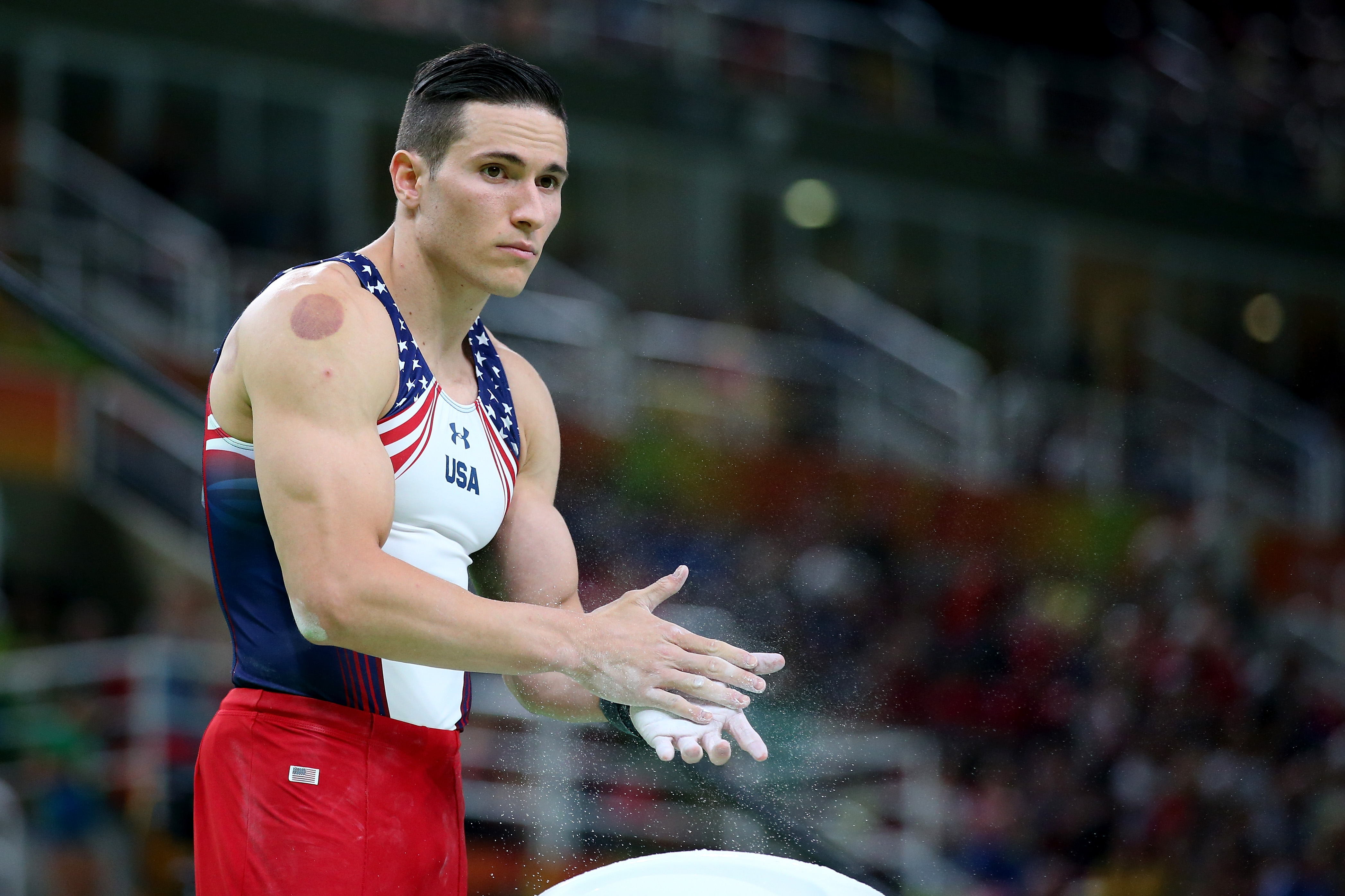
Alexander Naddouat during the Artistic Gymnastics Men's Team qualification at the Rio 2016 Olympic Games in Rio de Janeiro, Brazil, on August 6, 2016. | Source: Getty Images
Ruta Meilutyte
A swimmer, Ruta Meilutyte, also had a visible red circle on her right arm as she competed in the Women's 100m Breaststroke Semifinal at the Rio 2016 Olympic Games.
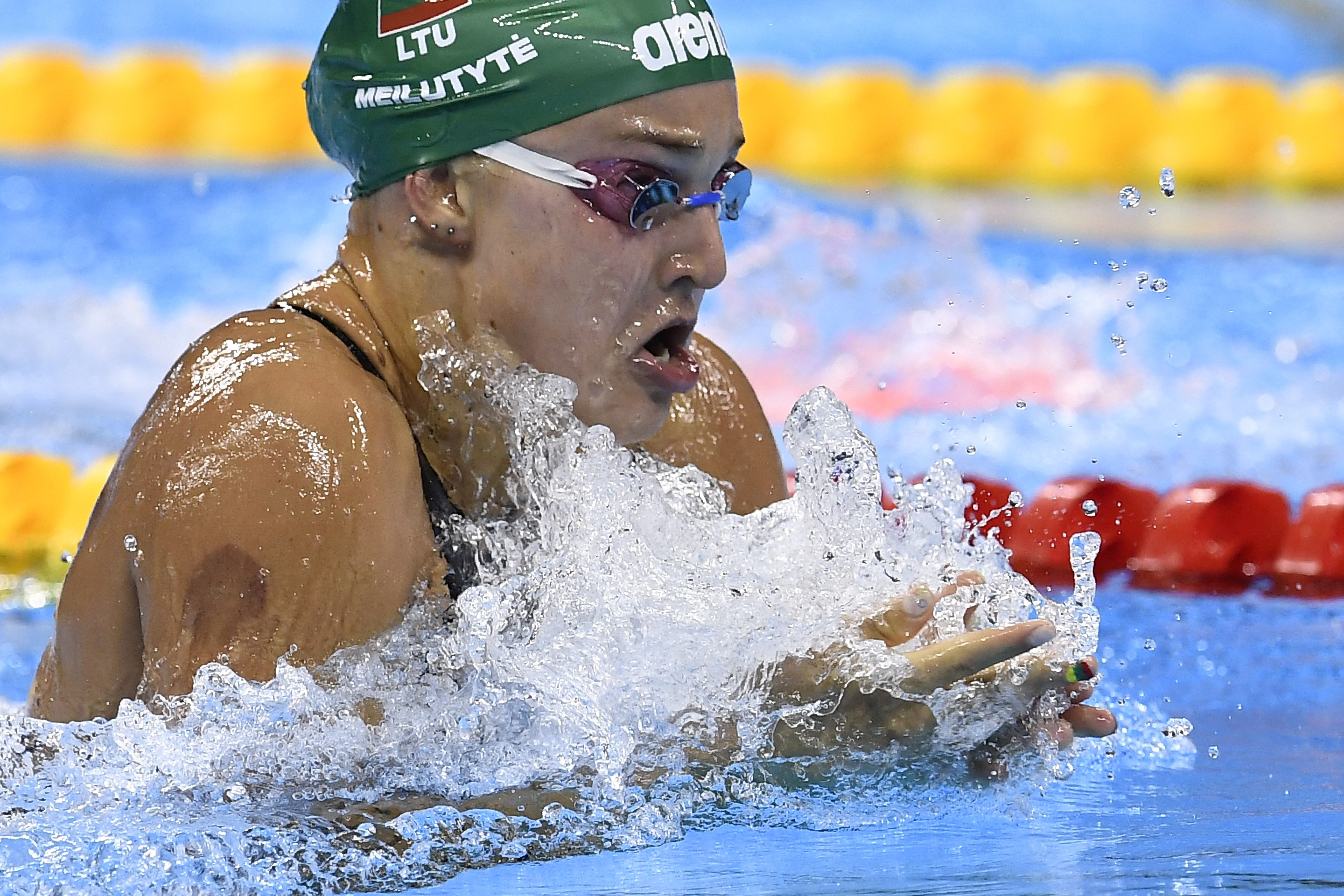
Ruta Meilutyte competes in the Women's 100m Breaststroke Semifinal during the swimming event at the Rio 2016 Olympic Games in Rio de Janeiro on August 7, 2016. | Source: Getty Images
Meilutyte's mark was seen again during a vulnerable moment as she appeared dejected after the Women's 100m Breaststroke Final.
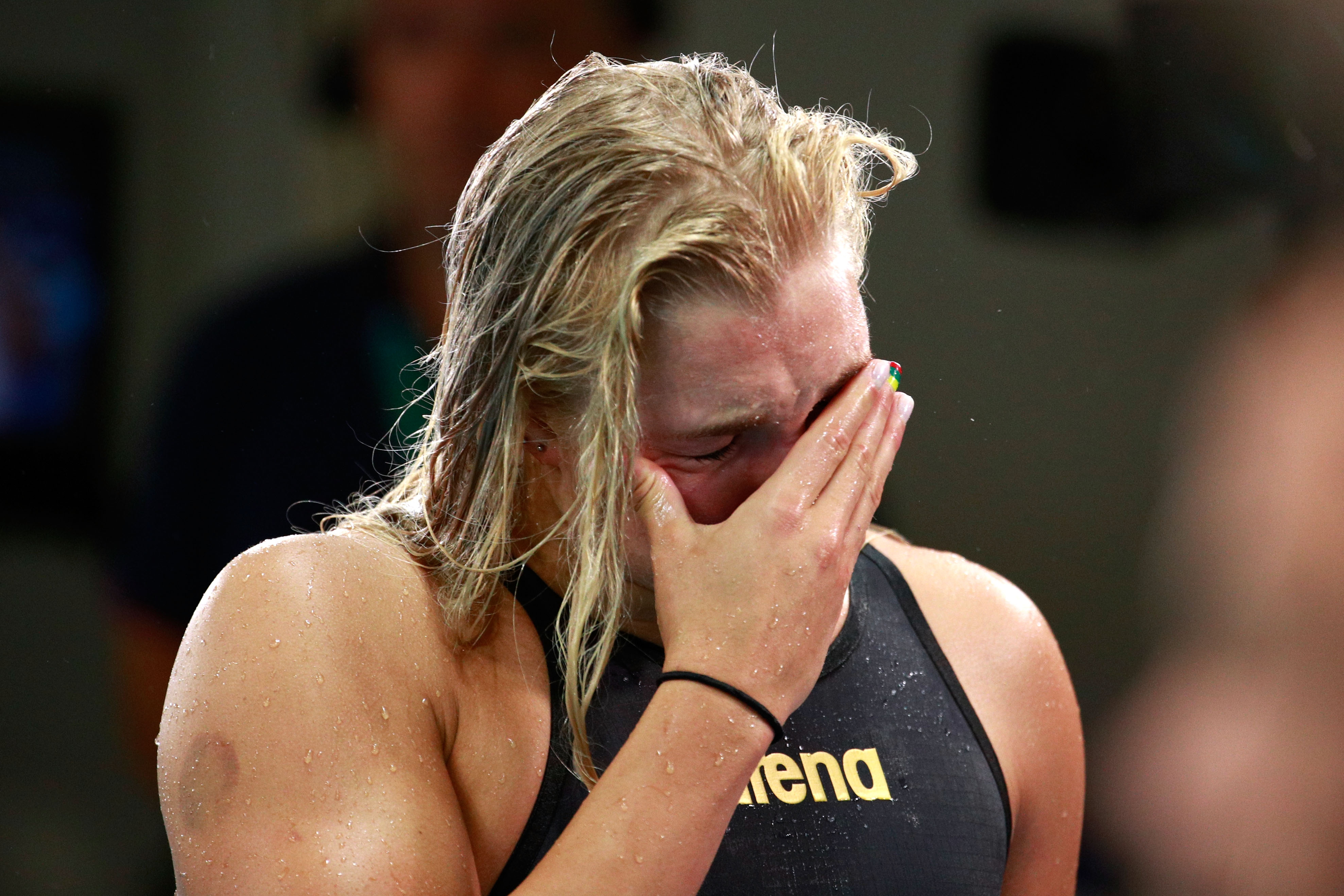
Ruta Meilutyte of Lithuania looks dejected after the Women's 100m Breaststroke Final at the Rio 2016 Olympic Games in Rio de Janeiro, Brazil, on August 8, 2016. | Source: Getty Images
Other Swimmers
The visible dark red circles on other swimmers' backs were strikingly uniform at the Tokyo 2020 Olympic Games. A male swimmer, for instance, had four symmetrical circles on each side of his rear torso, creating a visually cohesive pattern.
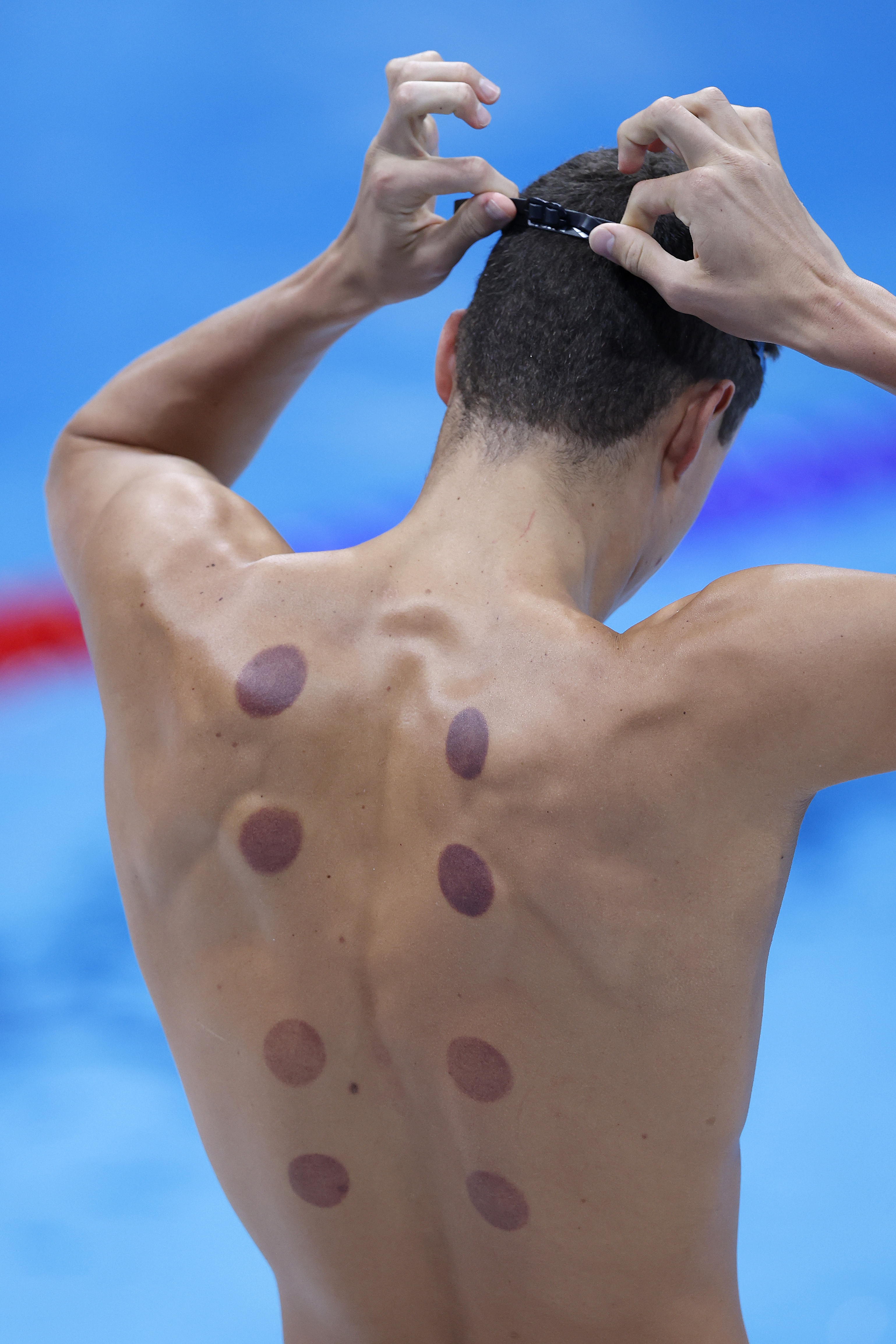
Marks are seen on the back of a swimmer during aquatics training ahead of the Tokyo 2020 Olympic Games in Tokyo, Japan, on July 22, 2021. | Source: Getty Images
Another swimmer had over 14 striking red discs across her back muscles. The discs were arranged in a linear and well-organized pattern, extending from her back to her arms and shoulders.
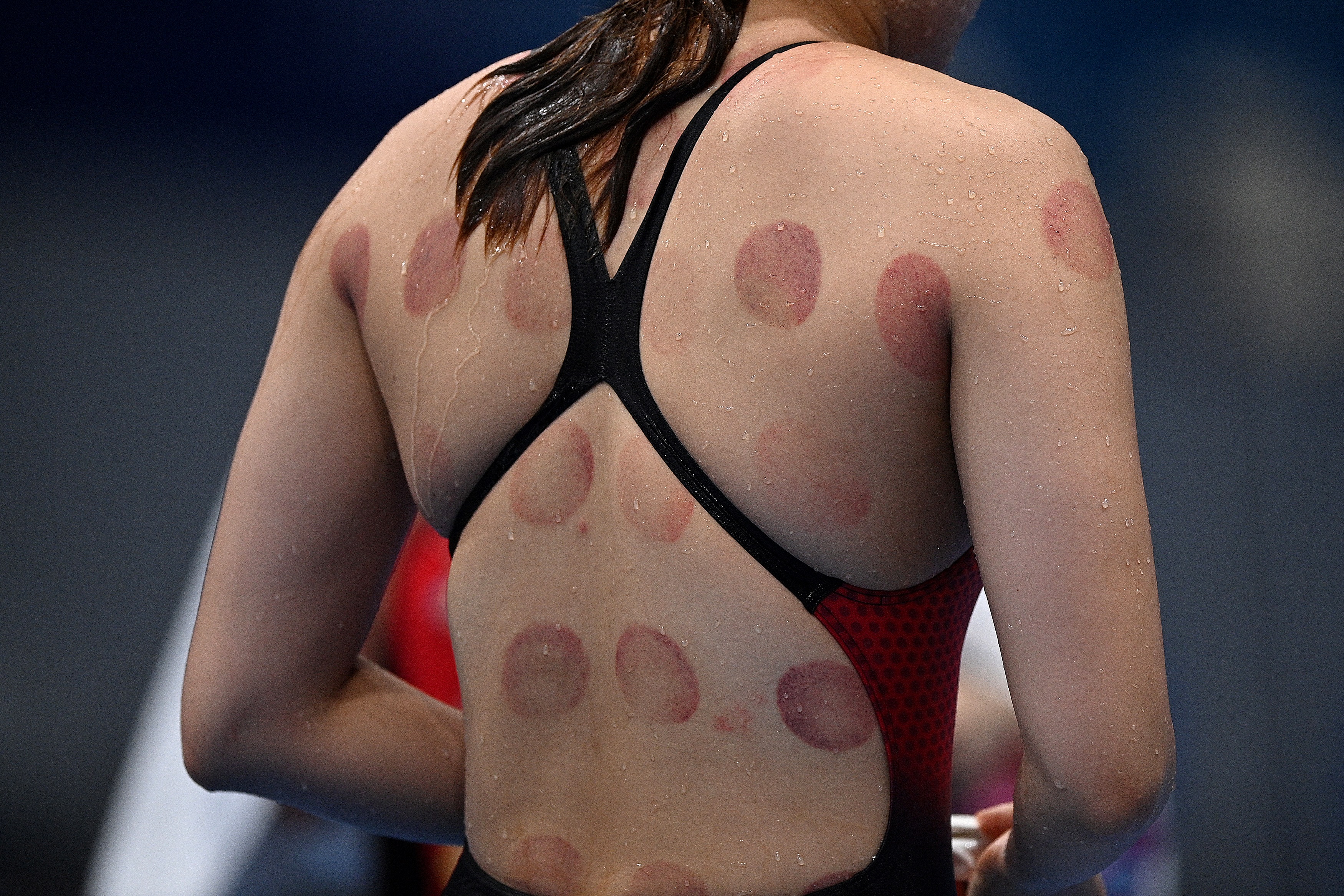
Marks are pictured on the back of a swimmer ahead of a swimming event during the Tokyo 2020 Olympic Games in Tokyo on August 1, 2021. | Source: Getty Images
Nicolo Martinenghi
Just like in past Olympic Games, Italian swimmer and gold medalist Nicolo Martinenghi followed the trend of athletes with dark red circles on their backs at the Paris 2024 Olympics.

Nicolo Martinenghi of Italy holds his gold medal after the Men's 100m Breaststroke Final at the Paris 2024 Olympic Games on July 28, 2024 | Source: Getty Images
During the final session of the swimming event on August 1, Martinenghi stood with his right hand behind his head, as if scratching it. The dark circles on his back were visible, with blue kinesiology tape just below them.
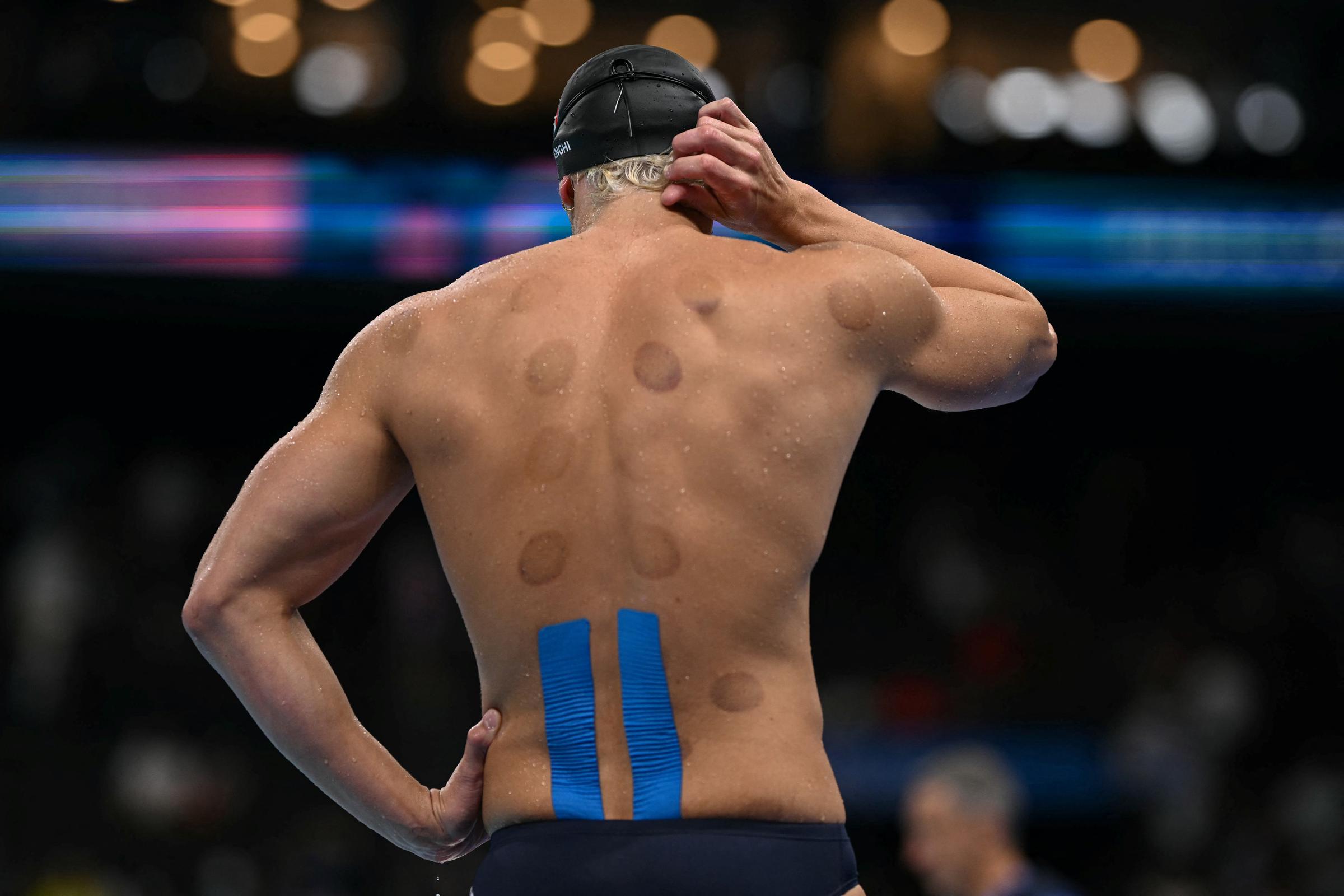
Nicolo Martinenghi of Italy displays dark circles on his back during the Paris 2024 Olympic Games at the Paris La Defense Arena in Nanterre on August 1, 2024 | Source: Getty Images
On July 27, during the Men's 100m Breaststroke event at La Defense Arena, Martinenghi was photographed with his arms folded on his hips, clearly revealing the dark circles on his skin from this angle.
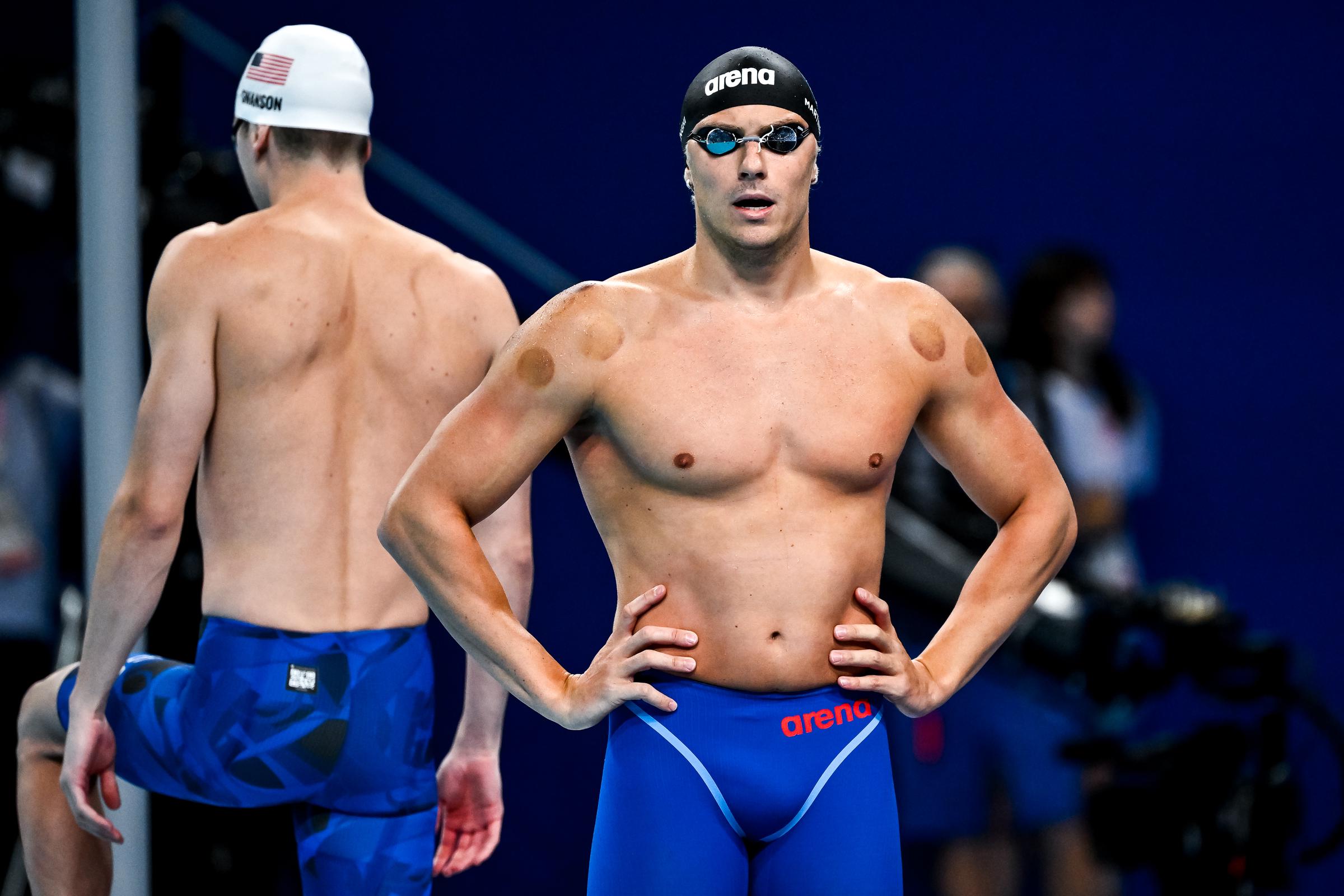
Nicolo Martinenghi of Italy prepares for the Men's 100m Breaststroke event at the Paris 2024 Olympic Games on July 27, 2024 | Source: Getty Images
The following day, during the Men's 100m Breaststroke Final, Martinenghi celebrated his victory with hugs outside the pool. Despite the dark marks on his back being touched during these embraces, he showed no signs of discomfort.
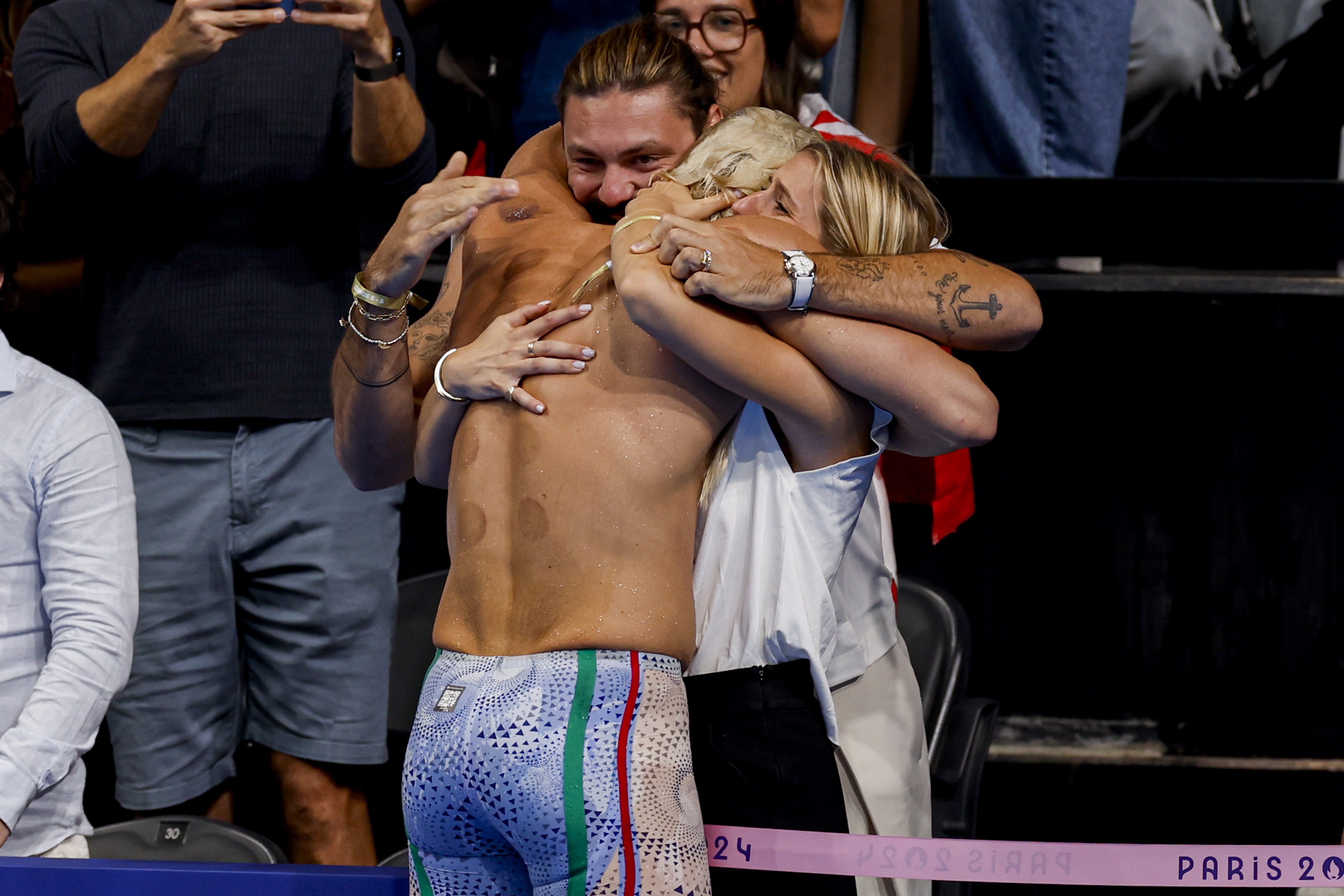
Nicolo Martinenghi of Italy celebrates with hugs after winning the Men's 100m Breaststroke Final at the Paris 2024 Olympic Games on July 28, 2024 | Source: Getty Images
In another moment, he was captured in the pool with his hands clasped together, revealing similar marks on his left arm. Some appeared darker, while others seemed to have lightened.
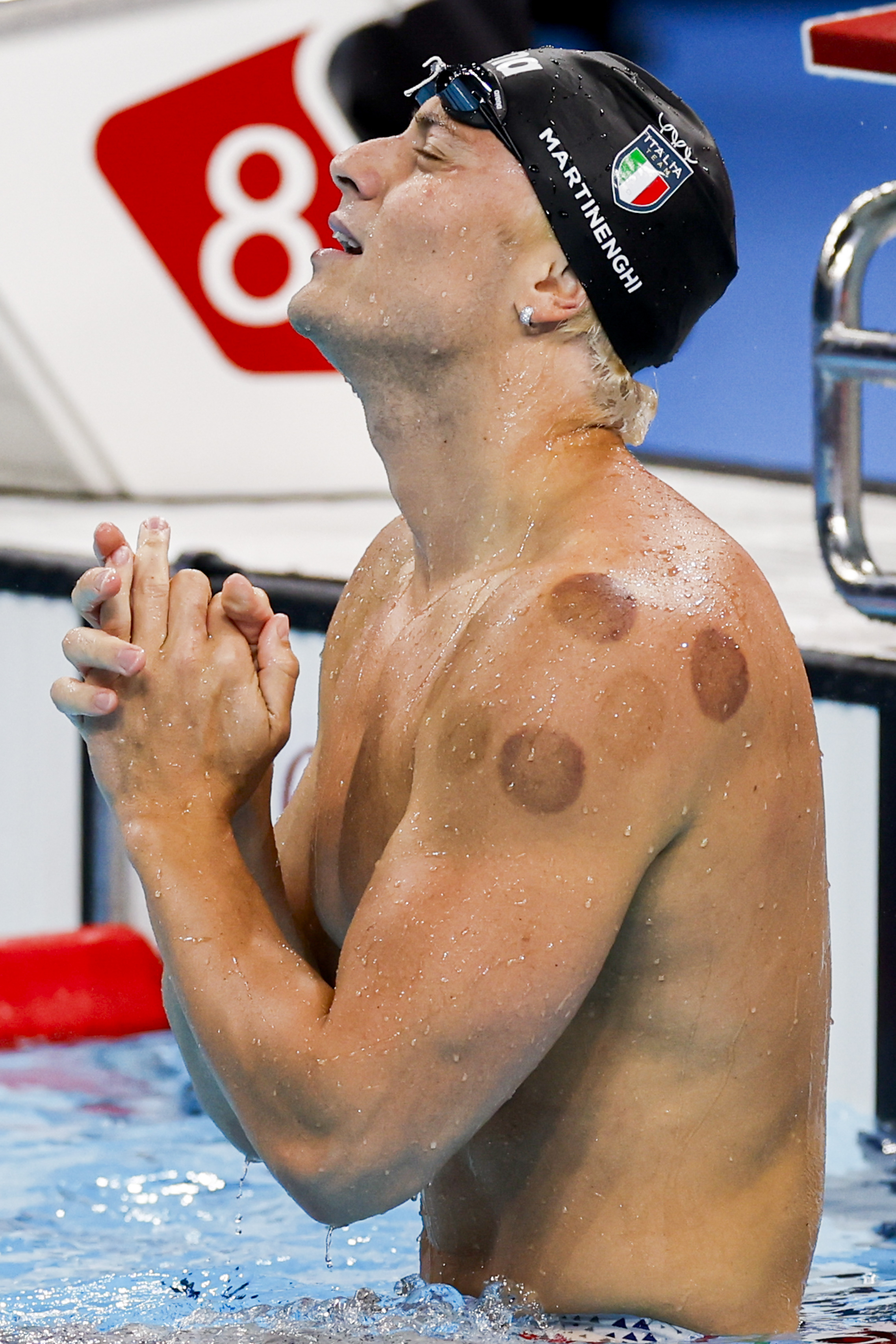
Nicolo Martinenghi of Italy clasps his hands during the Men's 100m Breaststroke Final at the Paris 2024 Olympic Games on July 28, 2024 | Source: Getty Images
His right arm also bore the same marks, though some had faded over time. Despite these spots, Martinenghi maintained a fun yet competitive demeanor throughout the event.
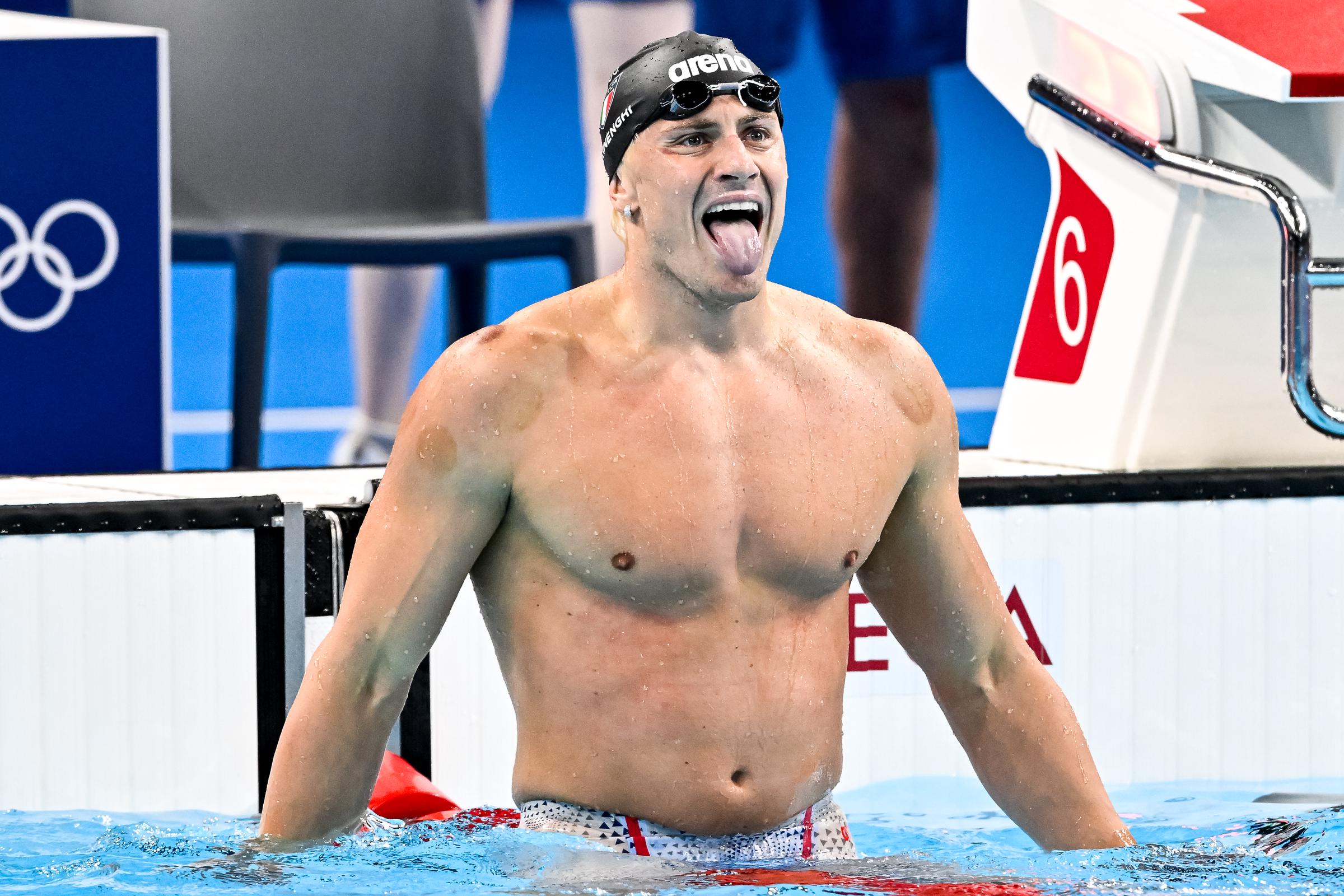
Nicolo Martinenghi of Italy celebrates with his tongue out after winning gold in the Men's 100m Breaststroke Final at the Paris 2024 Olympic Games on July 28, 2024 | Source: Getty Images
In a similar moment, he was seen in the pool hugging Great Britain's Adam Peaty. From this angle, the lines of dark circle marks on his back were fully visible. Even underwater, he appeared relaxed, showing no signs of discomfort.
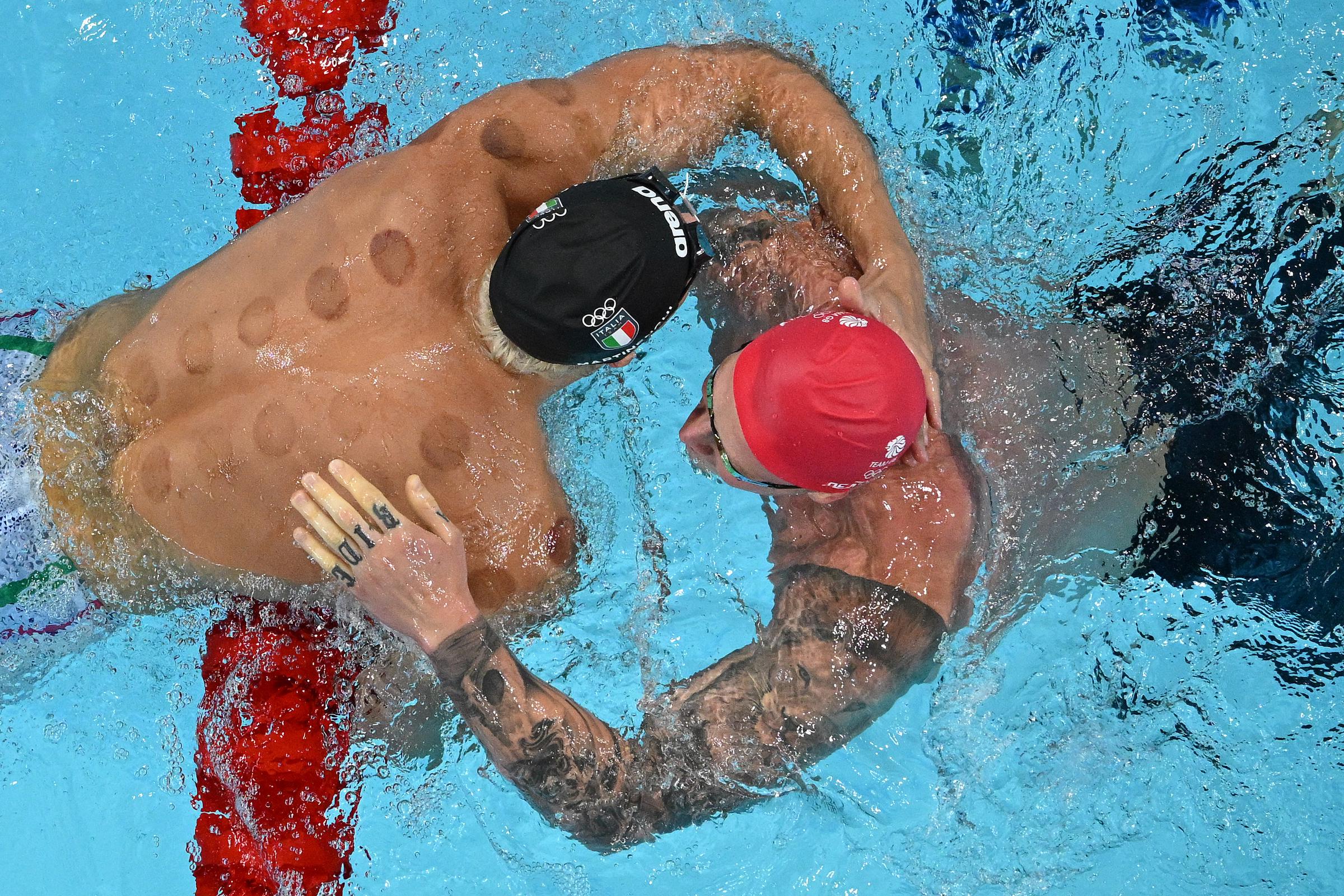
Italian swimmer Nicolo Martinenghi hugs British swimmer Adam Peaty after winning the Men's 100m Breaststroke Final at the Paris 2024 Olympic Games on July 28, 2024
Jennifer Aniston
Aside from athletes, celebrities such as Jennifer Aniston have been spotted with dark red circles on their bodies. Aniston was seen with these marks at the premiere of "Call Me Crazy" in Los Angeles in 2013.
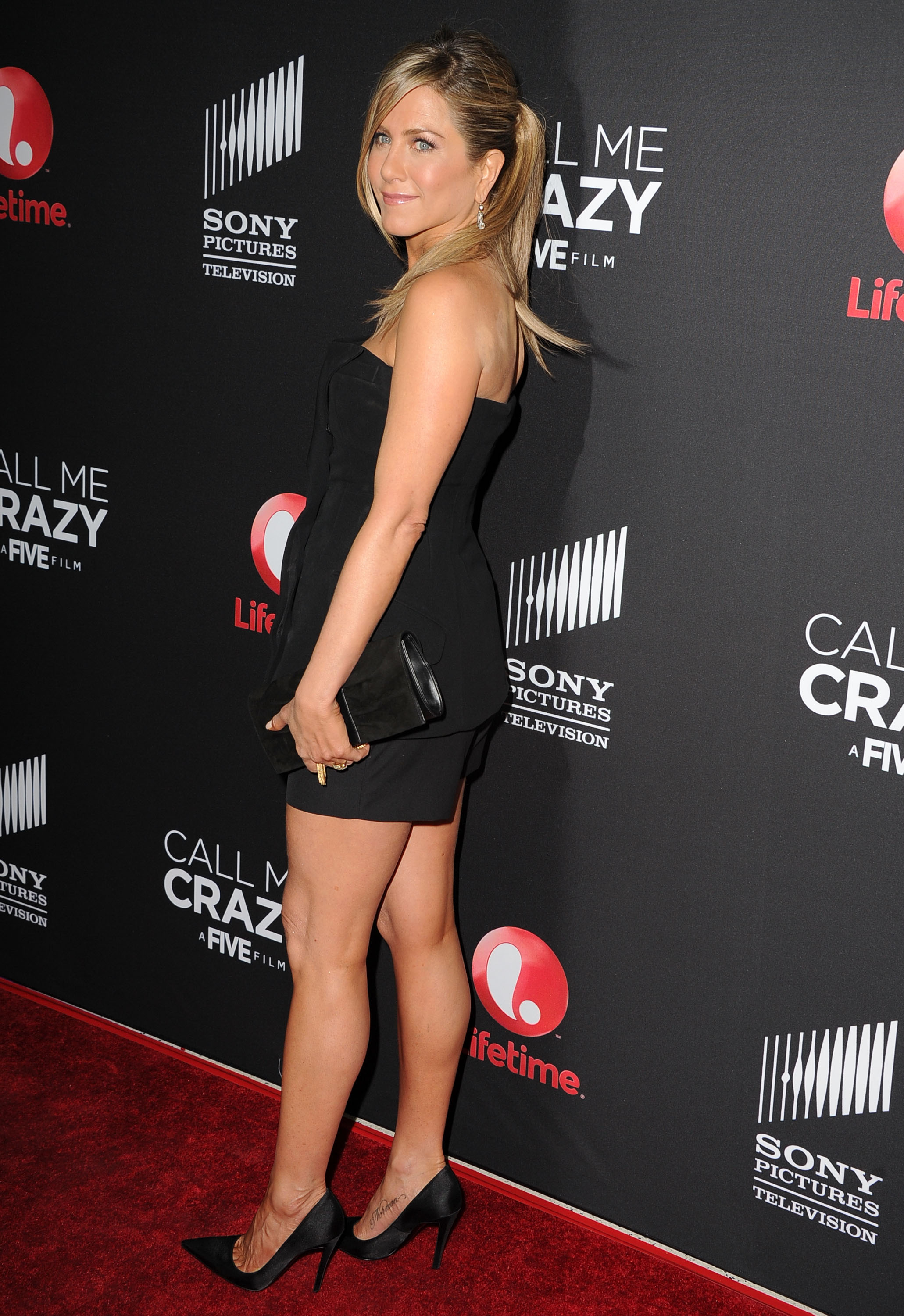
Jennifer Aniston arrives at the World Premiere of The Lifetime Original Movie Event "Call Me Crazy: A Five Film" in West Hollywood, California, on April 16, 2013. | Source: Getty Images
She wore a strapless playsuit, which showed the marks on her upper back. It seemed Jennifer had attempted to cover them with foundation, but the shade was too light and became noticeable under the paparazzi's flashes.
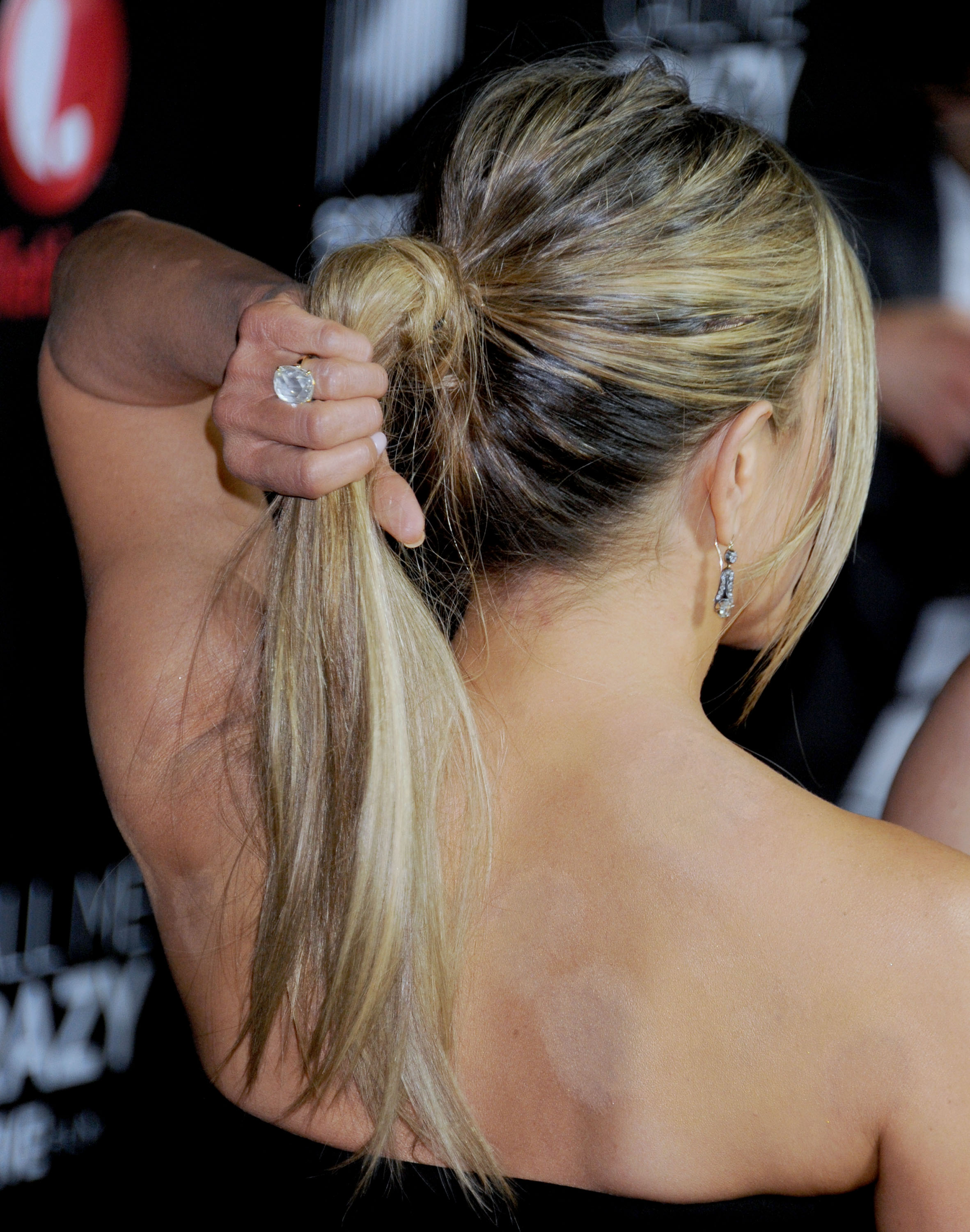
Jennifer Aniston arrives at the World Premiere of The Lifetime Original Movie Event "Call Me Crazy: A Five Film" in West Hollywood, California, on April 16, 2013. | Source: Getty Images
Gwyneth Paltrow
The eye-catching red rings garnered attention among fans in the Olympics but Gwyneth Paltrow had long been spotted with them, close to two decades ago.
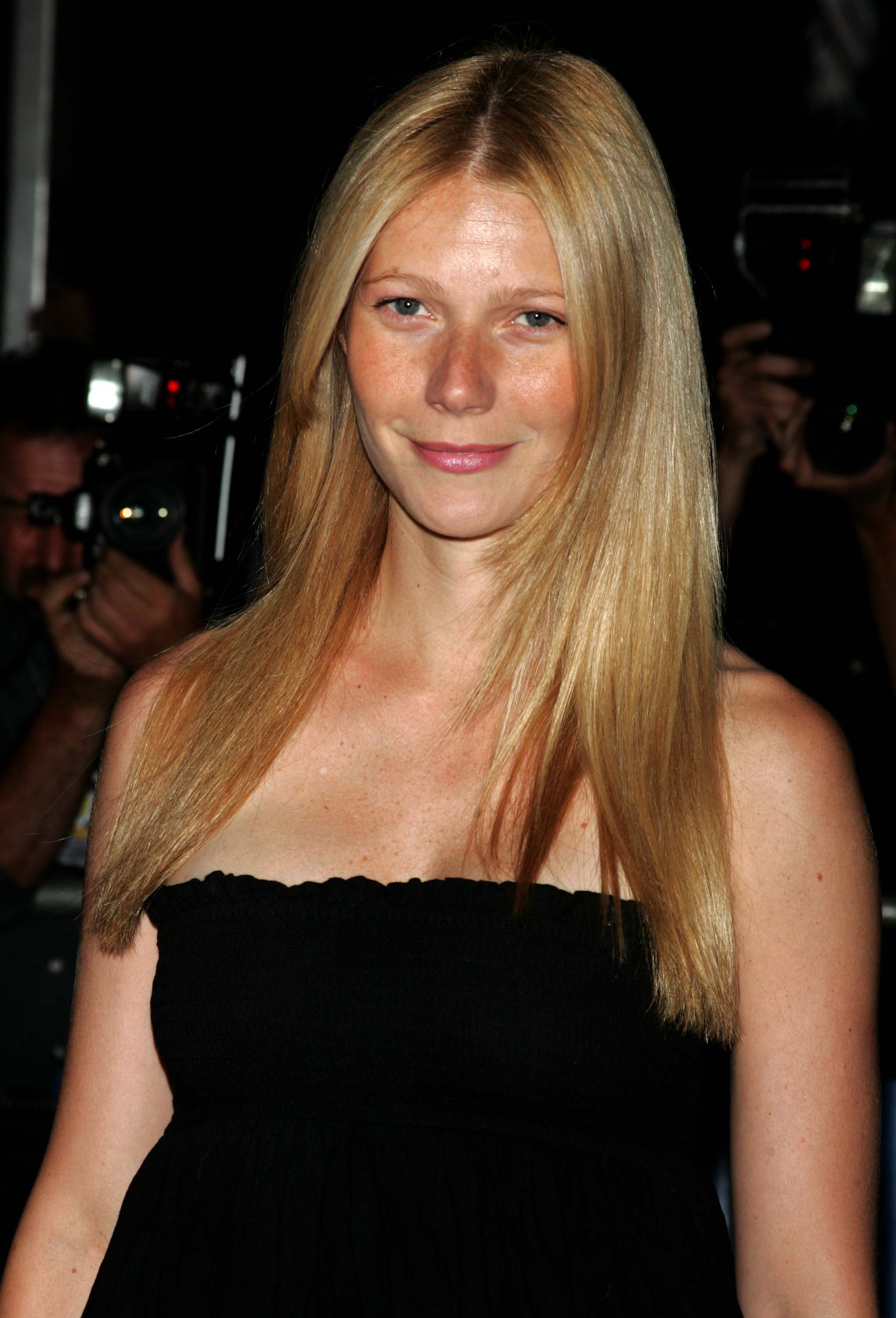
Gwyneth Paltrow at the "Anchorman - The Legend of Ron Burgundy" premiere in New York City, on July 7, 2004. | Source: Getty Images
At the 2004 premiere of "Anchorman," the movie star displayed the same distinctive dark red marks on her back as seen on the Olympic athletes.
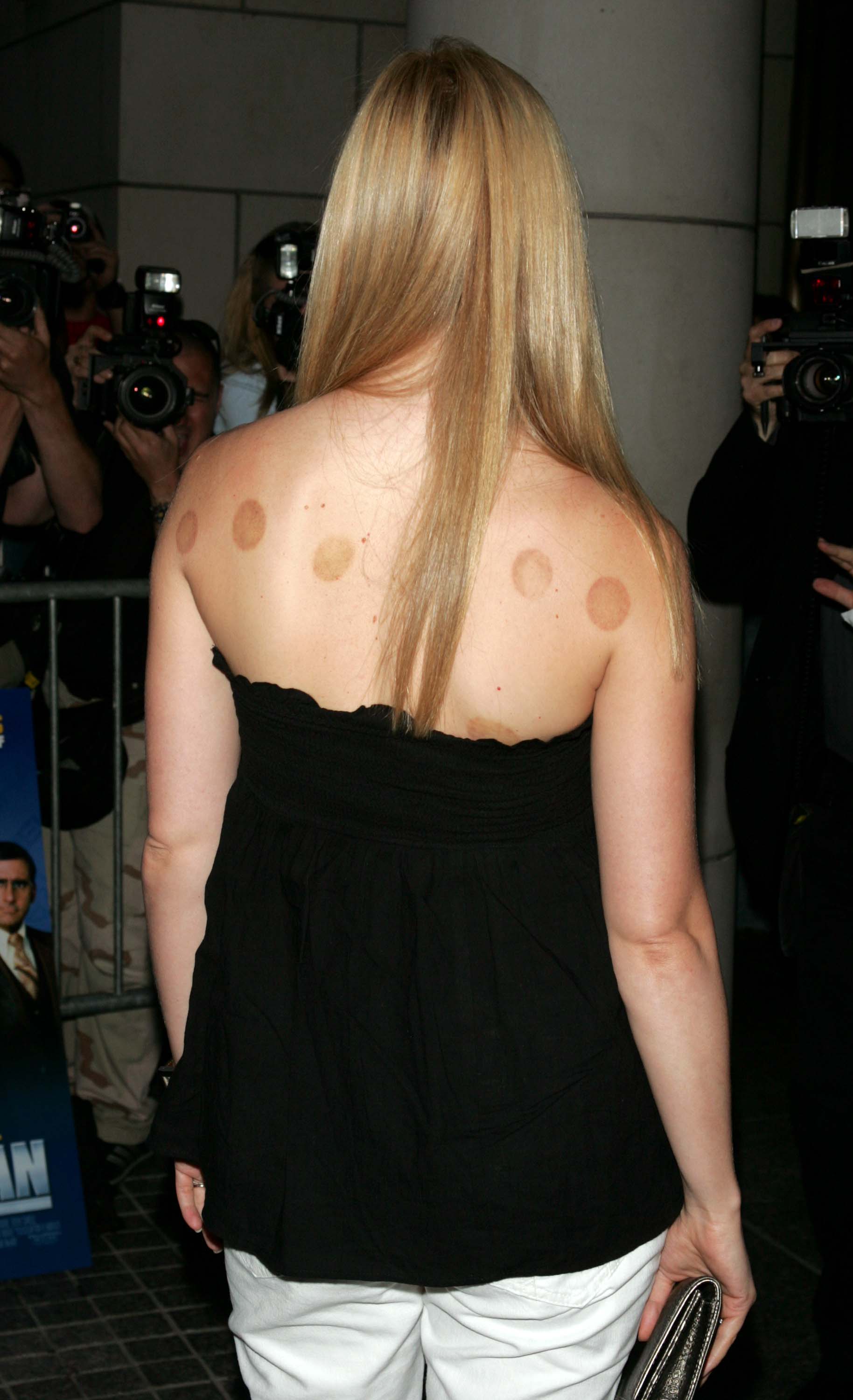
Gwyneth Paltrow at the "Anchorman - The Legend of Ron Burgundy" premiere in New York City, on July 7, 2004. | Source: Getty Images
At the time, the images sparked a media frenzy, with publications worldwide writing about the practice that caused the unusual marks on Paltrow's back.
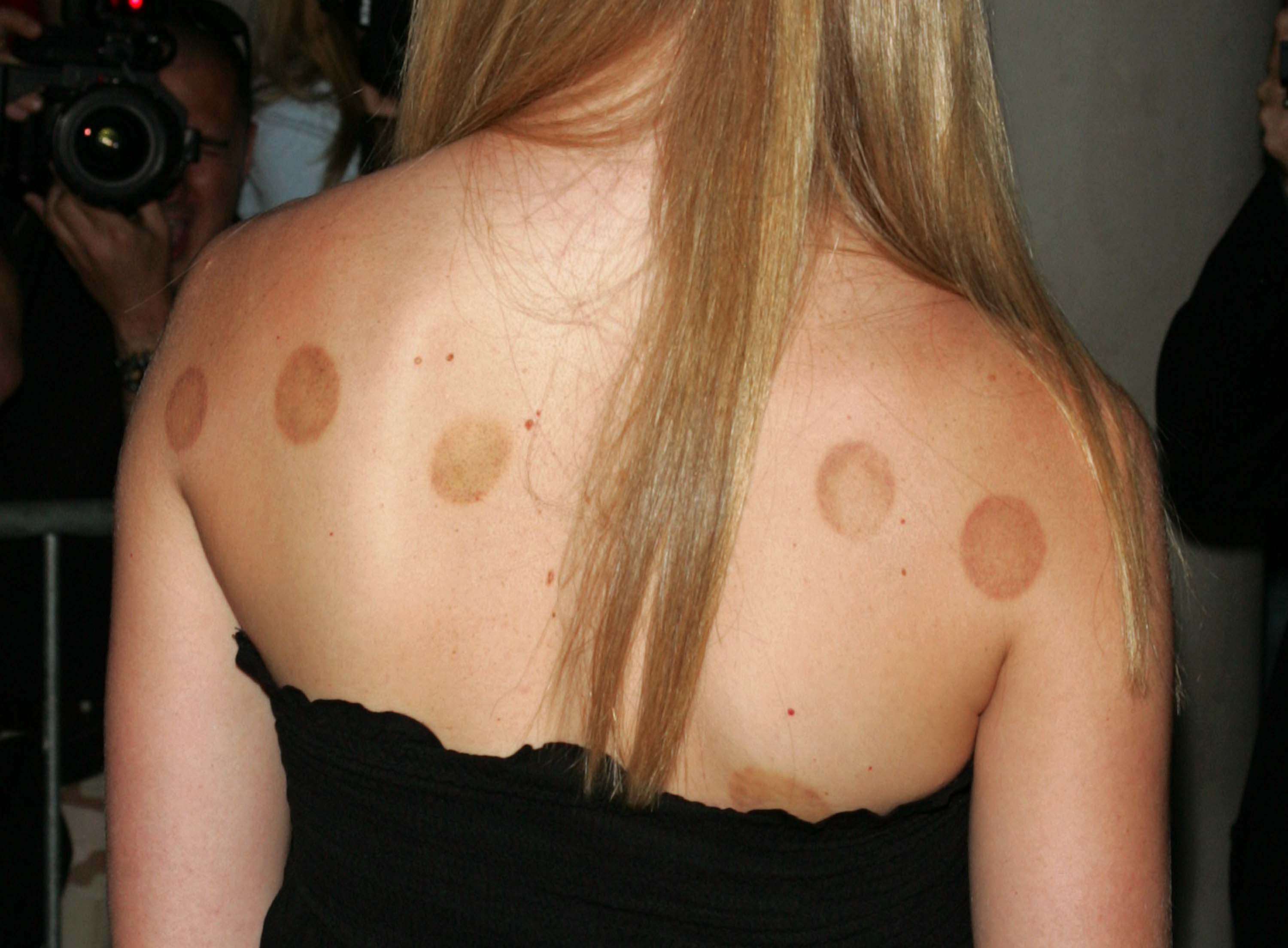
Gwyneth Paltrow at the "Anchorman - The Legend of Ron Burgundy" premiere in New York City, on July 7, 2004. | Source: Getty Images
The Therapy Called Cupping
The unusual round dark red marks are caused by a therapy called cupping. This therapy leaves circular marks that can be mistaken for bruises.
The practice, rooted in ancient Chinese medicine, has been employed for at least 2000 years to treat pain, muscle stiffness, and respiratory issues.
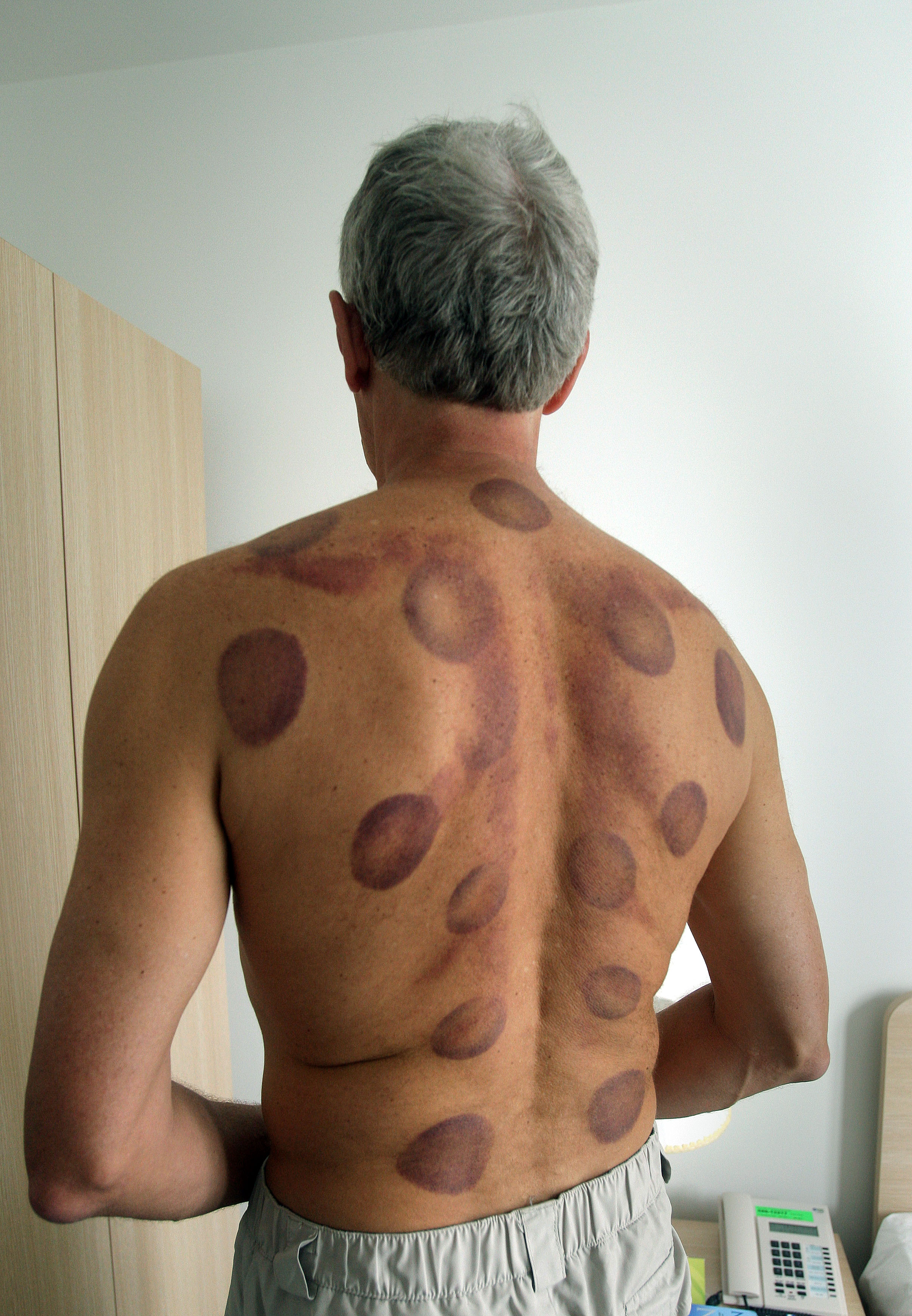
Scott Ostler after having a major cupping while covering the 2008 Beijing Olympics, in China, on August 6, 2008. | Source: Getty Images
This therapy involves creating suction in special cups using heat or air, which are then placed on the body. The vacuum pulls the skin and blood vessels towards the cup, often leaving marks on the skin.
This process is believed to draw blood to the area, enhancing circulation, and relaxing muscles and joints. There are also suggestions that cupping has anti-inflammatory effects.
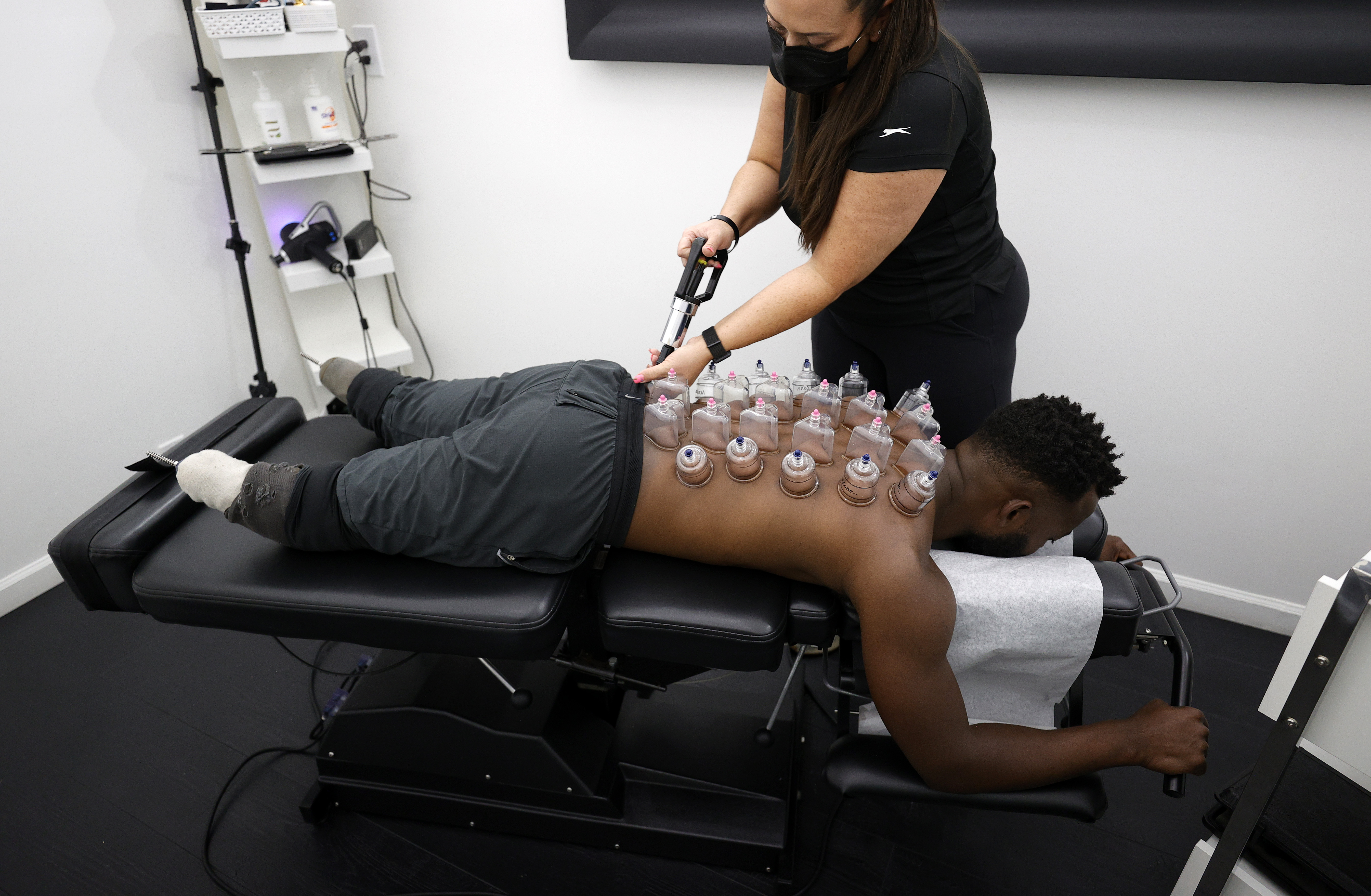
Blake Leeper has cupping therapy done by chiropractor Dr. Charley Fisher in Los Angeles, California, on May 13, 2021. | Source: Getty Images
Cupping's anti-inflammatory effects occur when the enhanced targeted circulation, promotes the removal of potentially inflammatory elements and encourages fresh blood flow.
The cups can remain in place or are occasionally moved around for those more adventurous for about 10 minutes. After removal, they leave behind the distinctive welts.
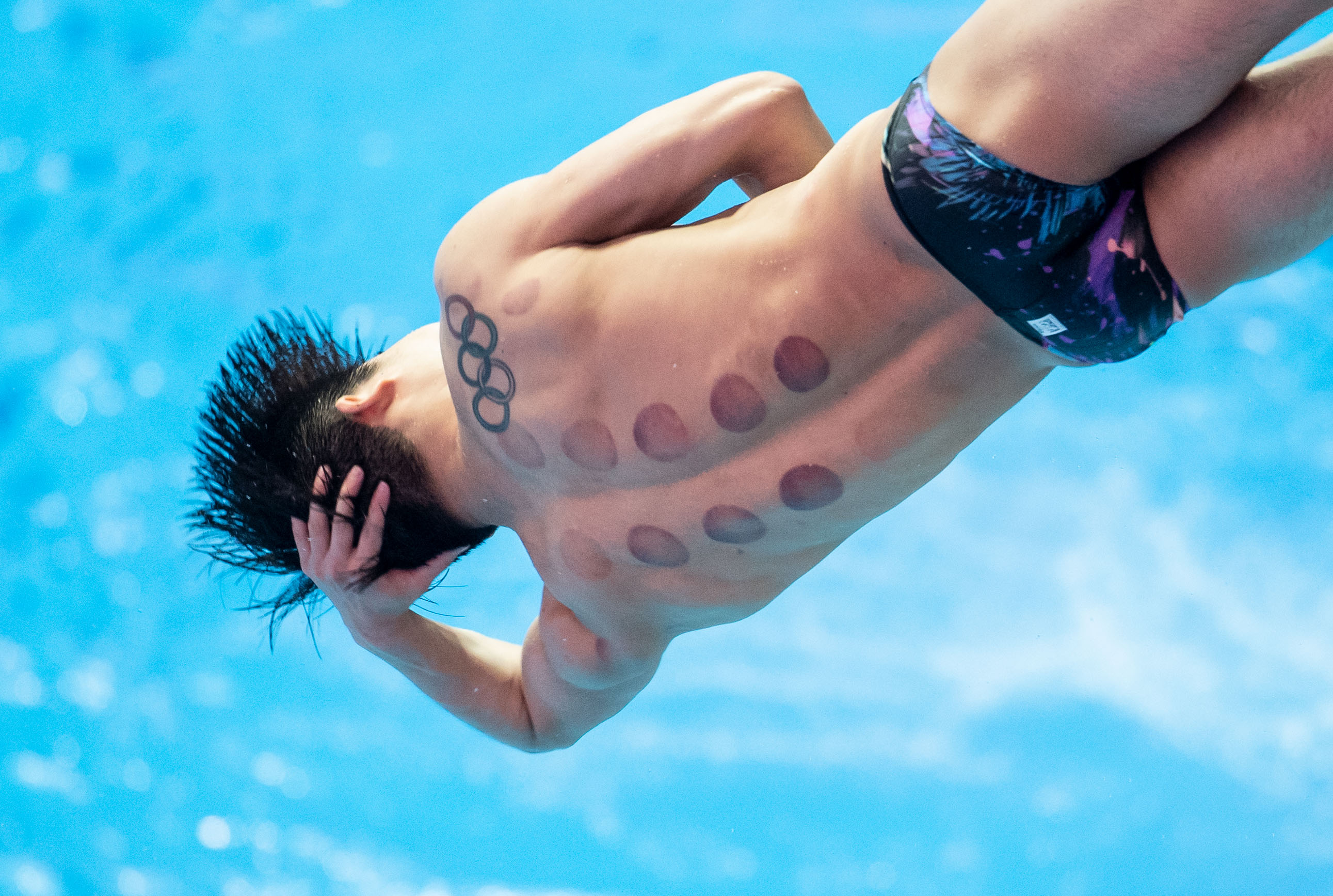
Water diver Haram Woo in action in Gwangju, Korea, on July 12, 2019. | Source: Getty mages
High-level athletes worldwide endorse cupping, the technique they credit for their performance. In the US, it is sometimes used alongside acupuncture or massage. While a specialist typically applies the cups, some athletes are doing it themselves.
Phelps has unintentionally become a spokesperson for the practice. Members of the gold-winning US women's gymnastics team are also among its supporters. Additionally, many in the NBA are enthusiastic advocates or cautious newcomers to cupping.
Swimmers and gymnasts who use cupping therapy claim it helps alleviate soreness in their overworked bodies. Former basketball player Kyle Singler said, "The bruises do look more intense than what they actually feel like. But the benefit from it is really great."
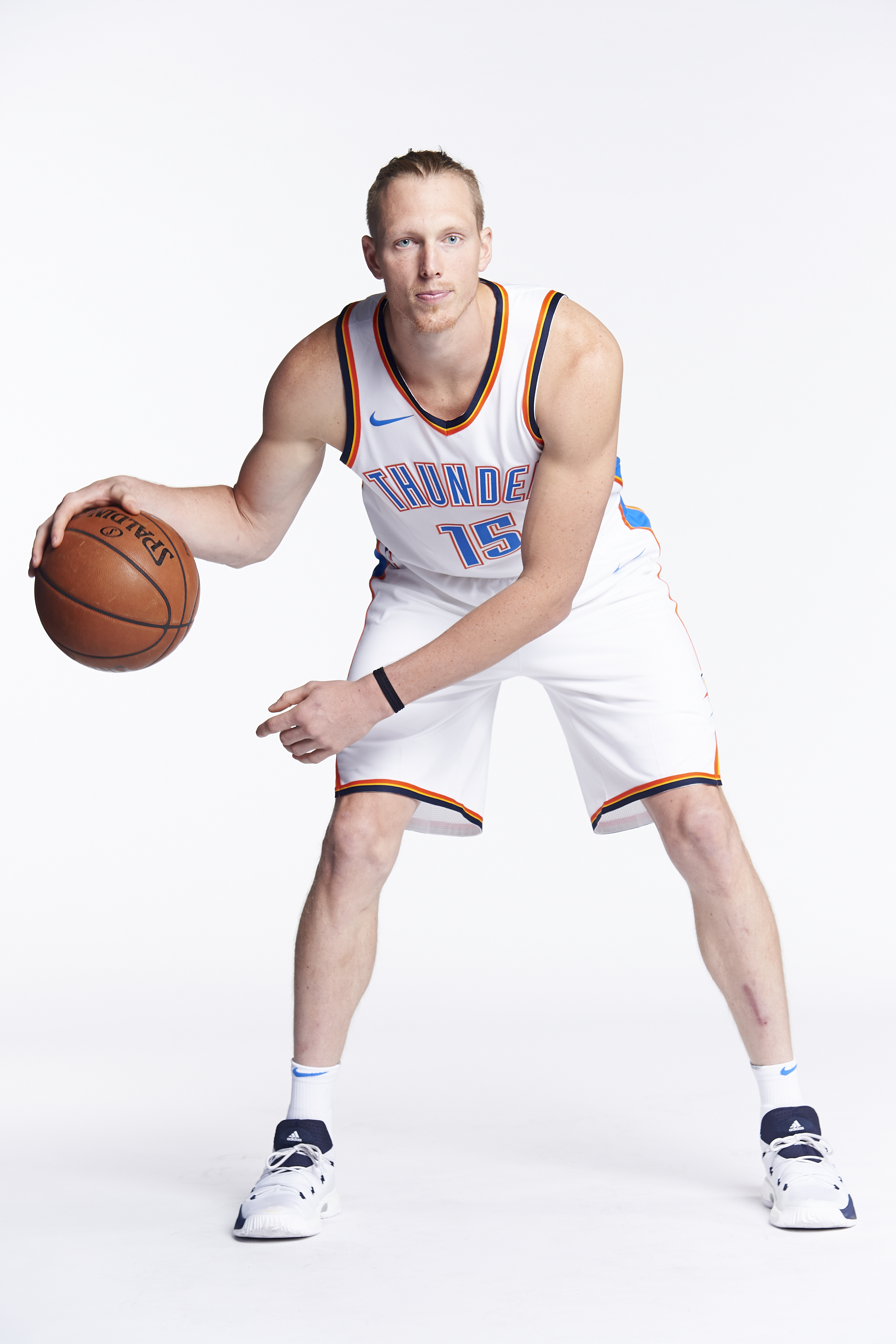
Kyle Singler #15 of the Oklahoma City Thunder poses for a photo during media day in Oklahoma City, Oklahoma, on September 25, 2017. | Source: Getty Images
According to Singler, cupping is used primarily for maintenance and recovery. It is an alternative medicine practice. While it doesn't provide an immediate response, over time, it proves beneficial for recovery and loosening tissue.
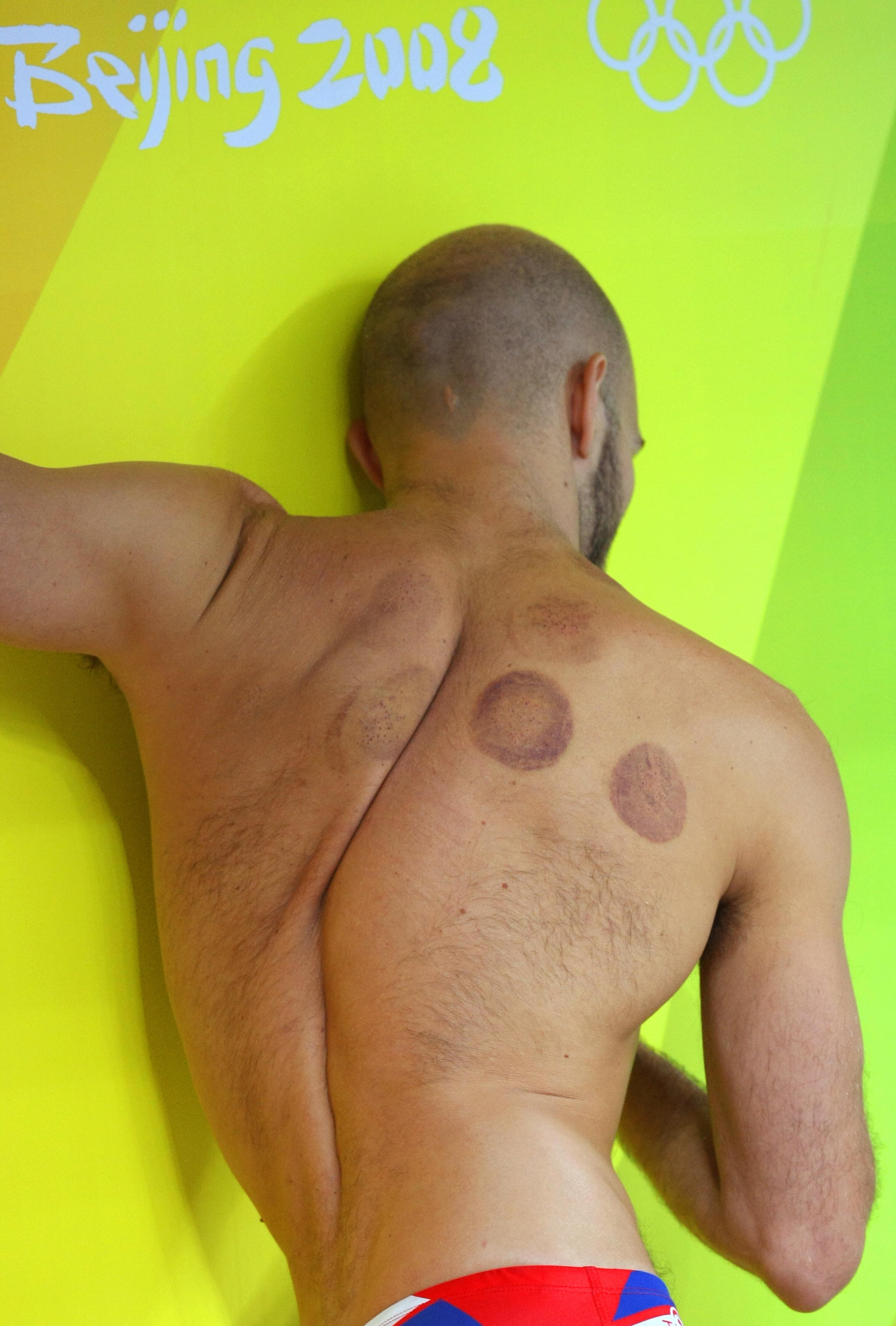
An unidentified swimmer seen with circular cupping marks prepares for a training session at the National Aquatics Center, in preparation for the 2008 Beijing Olympic Games, in Beijing, on August 7, 2008. | Source: Getty Images
Cups used in cupping therapy can be crafted from bamboo, glass, or earthenware. The precise mechanism of cupping remains unclear.
However, some researchers propose that placing the cups on specific acupoints on the skin causes increased blood flow or hemostasis, which in turn has a therapeutic effect.
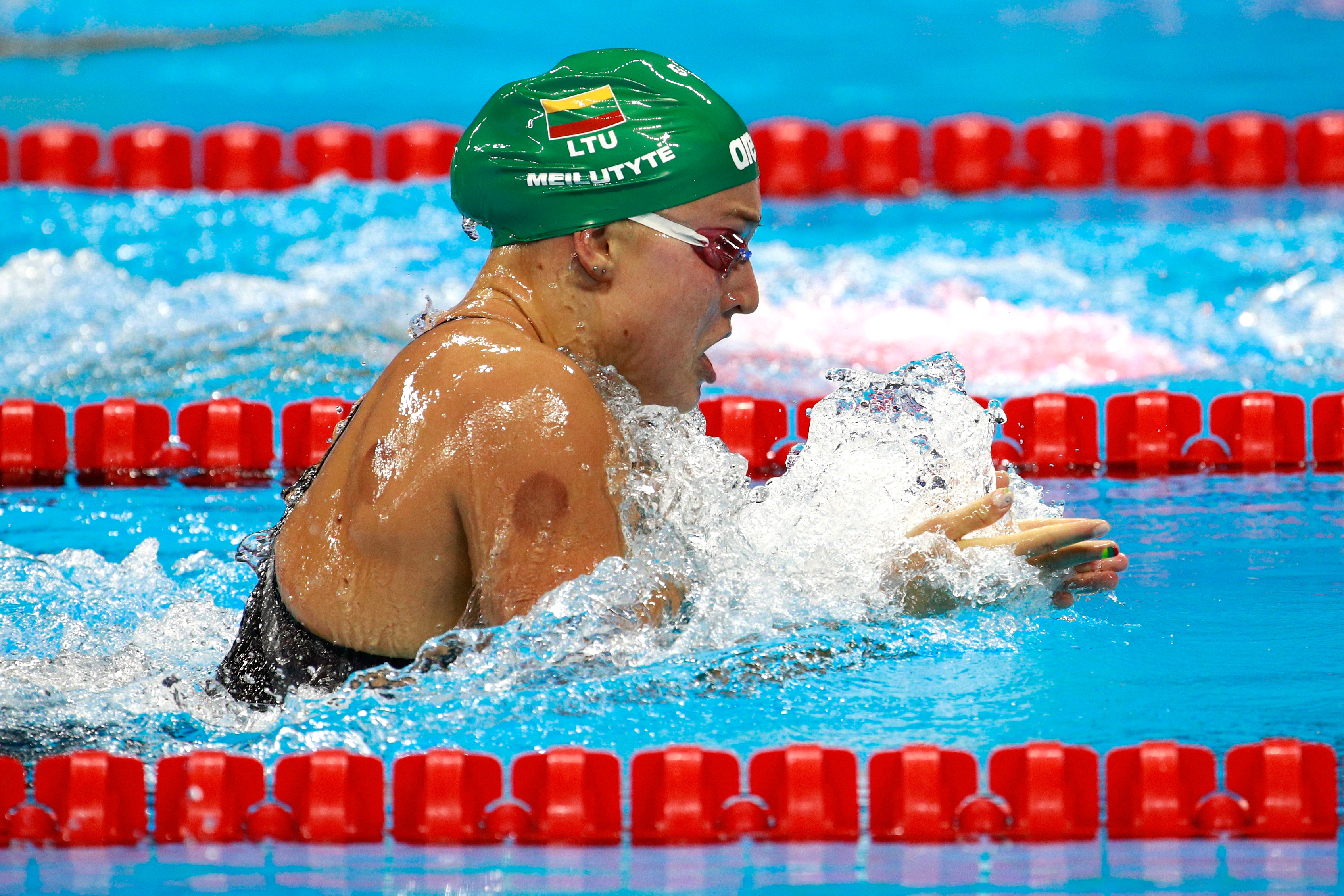
Ruta Meilutyte competes in the first Semifinal of the Women's 100m Breaststroke at the Rio 2016 Olympic Games in Rio de Janeiro, Brazil, on August 7, 2016. | Source: Getty Images
Studies have also cited the use of cupping in health issues such as managing cancer pain, low back pain, and acute trigeminal neuralgia. The therapy has also appeared to be effective on acne and facial paralysis.
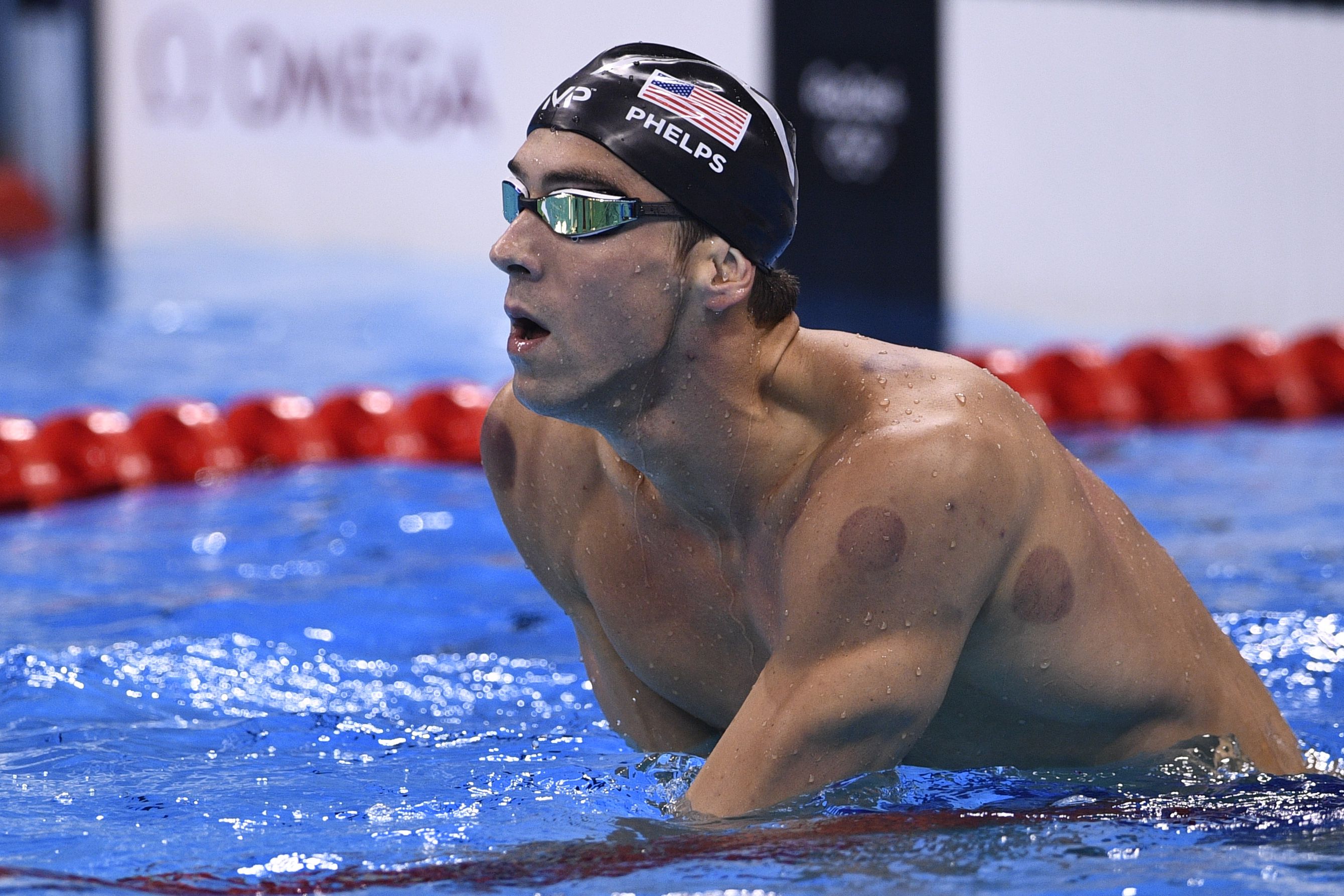
Michael Phelps wins the Men's 200m Butterfly Final at the Rio 2016 Olympic Games in Rio de Janeiro on August 9, 2016. | Source: Getty Images
Therefore, dark red circles on Olympic athletes and other celebrities are not bruises or body décor but evidence of cupping therapy. This practice helps in body recovery and maintenance and offers therapeutic benefits.
The information in this article is not intended or implied to be a substitute for professional medical advice, diagnosis or treatment. All content, including text, and images contained on news.AmoMama.com, or available through news.AmoMama.com is for general information purposes only. news.AmoMama.com does not take responsibility for any action taken as a result of reading this article. Before undertaking any course of treatment please consult with your healthcare provider.
